
Lakshadweep Digital Library
Discover a digital library dedicated to Lakshadweep's rich history, culture, and unique marine ecosystem.
Introduction to Lakshadweep
Lakshadweep, a stunning archipelago located off the southwestern coast of India in the Arabian Sea, is India's smallest Union Territory. Comprising 36 coral islands and atolls, only 10 of which are inhabited, Lakshadweep is renowned for its crystal-clear waters, vibrant coral reefs, and unspoiled white-sand beaches. Positioned about 200-440 kilometers from the Kerala coast, the islands are known for their ecological importance and exceptional marine biodiversity.
Lakshadweep's significance lies not only in its breathtaking natural beauty but also in its role as a hub for sustainable eco-tourism and marine conservation. The archipelago supports a rich cultural heritage, influenced by its proximity to Kerala and the Maldives, and is home to a unique blend of traditions. The coral reefs and lagoons provide vital ecosystems for marine species, making the islands a prime destination for activities like snorkeling, scuba diving, and deep-sea fishing.
With its emphasis on preserving its delicate environment, Lakshadweep offers a serene escape for travelers looking to experience pristine nature and a slower pace of life in harmony with the ocean.
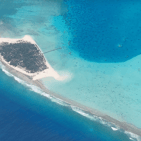
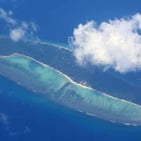
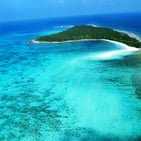
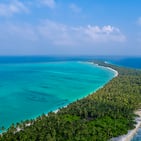
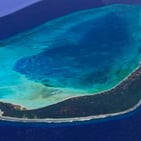
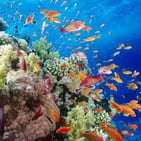
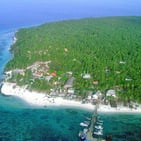
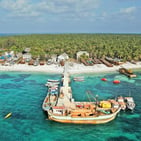
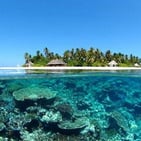
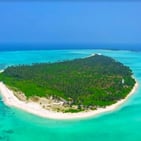
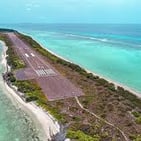
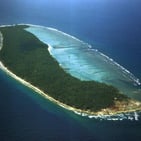
Rich History of Lakshadweep
Early Settlements of Lakshadweep
The early history of Lakshadweep is closely tied to its strategic location along ancient maritime trade routes in the Arabian Sea. Although archaeological evidence is scarce, it is believed that the islands were first settled by people from the nearby state of Kerala. The early settlers brought with them their language, traditions, and lifestyle, shaping the initial culture of Lakshadweep.
The islands also played a significant role in ancient trade between India, the Middle East, and East Africa. Arab traders, navigating through the Arabian Sea, frequently stopped at Lakshadweep, which served as a crucial point of rest and trade along their routes. Over time, Arab traders began to exert a lasting influence on the islands, introducing Islam to the region. By the 7th century AD, Islam had become the dominant religion on the islands, largely due to the missionary work of Malik Ibn Dinar, an Arab Islamic scholar.
The cultural exchanges between Kerala and the Arab world shaped the identity of Lakshadweep, giving it a unique blend of South Indian and Arab influences. This is still evident today in the islanders' language, culture, religious practices, and architecture. Lakshadweep’s early settlers laid the foundation for a rich heritage that continues to flourish in this remote, yet historically significant, region of India.
Colonial Era: Lakshadweep under Portuguese and British Rule
The strategic location of Lakshadweep in the Arabian Sea made it an attractive point of interest for various colonial powers, particularly the Portuguese and the British, though the islands were relatively isolated and difficult to control.
Portuguese Influence
In the 16th century, during the height of Portuguese naval dominance in the Indian Ocean, the Portuguese attempted to establish control over the Lakshadweep islands as part of their larger colonization efforts in India. The islands, especially those like Minicoy and Agatti, were attractive due to their proximity to trade routes between India and the Middle East. However, unlike their strongholds on the mainland and the nearby Malabar Coast, the Portuguese influence on Lakshadweep was limited.
They are believed to have briefly occupied a few islands, but resistance from the local population, combined with the remoteness of the islands, made it difficult for them to maintain a lasting presence. By the late 16th century, the Portuguese had abandoned any substantial effort to control Lakshadweep, focusing instead on more accessible parts of India.
British Rule
Lakshadweep came under more formal control during the British colonial period in India. After the decline of Portuguese influence and other regional powers, the islands eventually became part of the British Indian Empire in the late 18th century.
During British rule, the islands were administratively managed under the Malabar district of the Madras Presidency. The British, recognizing the strategic importance of Lakshadweep, exercised control over its governance and imposed a system of taxation on the coconut and coir industries, which were the primary economic activities of the islanders.
While the British presence on the islands was not as intrusive as it was in other parts of India, they left a lasting impact on Lakshadweep’s administrative structure. The British also played a role in maintaining peace between the various island communities and curbing piracy, which had sporadically plagued the region.
Post-Colonial Transition
After India gained independence in 1947, Lakshadweep was integrated into the newly formed Indian Union. In 1956, Lakshadweep was declared a Union Territory of India, formally marking the end of centuries of colonial influence. The region has since been governed with a focus on preserving its unique culture and delicate ecosystem while promoting sustainable development.
Though colonial powers left their mark on Lakshadweep, the islands remained largely autonomous and resilient, maintaining their cultural and religious identity despite external pressures.
Post-Independence Era
After India gained independence in 1947, the future of Lakshadweep became a significant concern due to its strategic location in the Arabian Sea. In the years following independence, the Government of India moved swiftly to integrate Lakshadweep into the newly formed nation. Initially, Lakshadweep was administered as part of the Madras Presidency, but in 1956, it underwent a major transformation.
Becoming a Union Territory
In 1956, under the States Reorganization Act, Lakshadweep was formally declared a Union Territory of India. This designation meant that the region would be governed directly by the Central Government of India, rather than being part of a state. The islands were recognized for their cultural and geographical uniqueness, as well as their significance for national security and defense.
The Union Territory status also ensured that the Indian government could provide direct oversight, safeguarding Lakshadweep’s fragile marine ecosystems and preserving its cultural identity. The islands were officially named “Lakshadweep” in 1973, meaning "one hundred thousand islands" in Sanskrit, replacing the older names "Laccadive, Minicoy, and Amindivi Islands."
Development and Infrastructure
Post-1956, the Indian government began focusing on improving the infrastructure and living conditions on the islands. Educational facilities, healthcare services, and transportation infrastructure were gradually improved to better connect the islands with the mainland. Shipping services between the islands and the mainland, particularly from Kerala, became more regular, making Lakshadweep more accessible.
Efforts were also made to promote eco-friendly tourism as the islands’ pristine beaches, coral reefs, and biodiversity became key attractions for travelers. At the same time, the government was careful to balance tourism with conservation, given the fragile nature of Lakshadweep’s ecosystem.
Cultural and Environmental Protection
The status of Lakshadweep as a Union Territory allowed for a greater focus on protecting the unique culture of the islanders, most of whom are of Muslim descent, with rich influences from both Kerala and Arab traders. The local traditions, language (Malayalam and Mahl), and way of life have been preserved and respected.
Furthermore, environmental conservation became a critical part of governance. Lakshadweep’s coral reefs and marine life are some of the most pristine in the world, and numerous laws have been enacted to ensure sustainable development, preventing over-tourism, and protecting the island’s ecosystems from threats like coral bleaching and climate change.
Modern Lakshadweep
Today, Lakshadweep stands as one of India’s most important Union Territories, known for its ecological significance and growing importance in tourism. The Indian government continues to support the development of the islands while ensuring the preservation of their natural beauty and cultural heritage.
The transition in 1956 set the foundation for Lakshadweep’s unique status in India, where both environmental stewardship and cultural preservation remain priorities.
Vibrant Culture of Lakshadweep
Local Traditions of Lakshadweep: Festivals, Music, and Dance
Lakshadweep’s culture is a beautiful blend of South Indian and Arab influences, shaped by centuries of interaction between the islands, Kerala, and Arab traders. The local traditions, primarily driven by Islamic customs, are simple yet vibrant, with a strong emphasis on community, music, and dance.
Festivals in Lakshadweep
Being a predominantly Muslim community, Lakshadweep’s festivals are closely linked to Islamic celebrations. The islanders observe these festivals with deep faith and joy, and they often become communal events where people come together in harmony.
Eid-ul-Fitr: Marking the end of Ramadan, Eid-ul-Fitr is the most widely celebrated festival in Lakshadweep. It is a time of joyous feasting and communal prayers. The islanders prepare special dishes, including traditional delicacies made with coconut and seafood, and gather at mosques and homes to share the joy of Eid.
Eid-ul-Adha: Also known as the “Festival of Sacrifice,” Eid-ul-Adha is celebrated with prayers, feasts, and the sharing of meat with family, friends, and the needy. The festival symbolizes devotion and charity.
Milad-un-Nabi: The birth of Prophet Muhammad is another significant occasion. Islanders participate in prayers and recitations of Islamic hymns, with local mosques often holding special events to mark the day.
Apart from Islamic festivals, the islands also celebrate local harvest festivals and community events, although on a smaller scale.
Music in Lakshadweep
Music in Lakshadweep is an intrinsic part of its culture, with traditional songs passed down through generations. The music here reflects the islanders’ close connection with the sea and their Islamic faith.
Boat Songs (Opana Pattu): Lakshadweep’s boat songs, or “Opana Pattu,” are famous for their melodious rhythms and captivating lyrics. These songs are traditionally sung by fishermen while at sea, often narrating tales of the ocean or expressing devotion. The songs are usually accompanied by simple percussion instruments, and their soothing tunes reflect the calmness of island life.
Maappila Songs: Also influenced by the Muslim community, Maappila songs are devotional and folk songs in the Malayalam and Mahl languages. These songs often narrate the stories of Prophet Muhammad, Islamic history, or local legends. They are deeply spiritual and are performed during festivals and communal gatherings.
Dance Forms in Lakshadweep
The dance traditions of Lakshadweep are simple yet deeply expressive. The islanders celebrate special occasions with dance performances that reflect their heritage and lifestyle.
Lava Dance: One of the most popular traditional dances of Lakshadweep, Lava Dance, is performed during festivals and significant events. This lively dance is set to the beat of drums, with performers wearing colorful traditional attire. The rhythmic movements of the dancers mirror the islanders' deep connection to the sea, and the dance often reflects their joy and gratitude for nature’s bounty.
Kolkali: This is a group dance traditionally performed by men. Kolkali involves rhythmic movements in a circle, with dancers striking small wooden sticks together in sync with the beat of a drum. The dance is usually performed during local celebrations and is a symbol of unity and teamwork among the islanders.
Parichakali: Another traditional dance, Parichakali, is performed in pairs or small groups, and it symbolizes a mock fight between warriors using shields. The dance is energetic and represents the martial traditions that were part of the islanders’ history.
Cuisine as a Cultural Tradition
While not a festival or dance form, the cuisine of Lakshadweep is another significant cultural tradition that binds the community. With an abundance of coconut and seafood, traditional dishes such as Tuna Curry, Coconut Rice, and Fish Masala are staples in every household. Food is an essential part of celebrations, and meals often reflect the island’s connection to Kerala and the sea.
Conclusion
The culture of Lakshadweep is a harmonious blend of simplicity, spirituality, and joy. Festivals, music, and dance are not just events or performances—they are expressions of the islanders’ identity and way of life. These traditions, deeply influenced by their Islamic faith and the natural beauty surrounding them, continue to thrive and are cherished by the people of Lakshadweep.
Cuisine of Lakshadweep: A Fusion of Kerala and Maldivian Flavors
Lakshadweep’s cuisine is a delightful fusion of Kerala and Maldivian influences, reflecting its rich maritime history and geographical proximity to these regions. The food on the islands is simple yet flavorful, with an emphasis on seafood and coconut, both of which are abundantly available. The cuisine is also shaped by the islanders’ Islamic traditions, offering a unique mix of tropical flavors and spices.
Key Ingredients
Seafood: Given its location in the Arabian Sea, seafood is a staple in Lakshadweep’s diet. Freshly caught tuna, mackerel, and other fish varieties form the base of most meals. Squid, octopus, and crabs are also popular and are often prepared in a variety of ways, including grilled, fried, or cooked in curries.
Coconut: Coconut trees thrive on the islands, and their fruit is a key ingredient in many dishes. Coconut milk, grated coconut, and coconut oil are used to flavor curries, rice, and desserts, adding a distinct sweetness and richness to Lakshadweep cuisine.
Rice: Rice is the main carbohydrate, typically served alongside seafood and coconut-based dishes. It is often flavored with spices and herbs, similar to Kerala’s rice dishes.
Signature Dishes of Lakshadweep
1. Tuna Curry
One of the most popular dishes in Lakshadweep, tuna curry is made using freshly caught tuna cooked in a rich coconut-based sauce. The dish is flavored with traditional spices like cumin, coriander, turmeric, and chili, giving it a mild but flavorful heat. The coconut milk balances the spiciness and adds a creamy texture to the curry.
2. Fish Fry
A simple yet delicious dish, fish fry is made with freshly marinated fish coated in spices like red chili powder, turmeric, and black pepper. The fish is then shallow-fried until crispy and golden, served with coconut chutney or rice. This dish is similar to the fish fries found in Kerala, but the use of local spices gives it a unique flavor.
3. Coconut Rice
Coconut rice is a staple dish, often served alongside seafood curries. Cooked with grated coconut, curry leaves, and fragrant spices, this rice dish is aromatic and subtly sweet. It complements the bold flavors of Lakshadweep’s seafood and is also enjoyed on its own as a light meal.
4. Octopus Masala
Octopus is a delicacy in Lakshadweep and is often prepared in a spicy masala. The octopus is cooked until tender in a mixture of onions, tomatoes, garlic, and spices, creating a rich and flavorful dish. It is usually served with flatbreads or rice, allowing the masala to shine.
5. Malabar Parotta
Borrowed from Kerala’s culinary tradition, the Malabar Parotta is a flaky, layered flatbread that is often served with seafood curries. Made from flour and cooked on a griddle, this bread is soft, buttery, and perfect for scooping up curries.
Influences of Maldivian Cuisine
Lakshadweep’s proximity to the Maldives has also left its mark on the local cuisine. Similar to Maldivian food, the cuisine here features fresh seafood, particularly tuna, and the heavy use of coconut in all forms. The methods of cooking and the combination of spices have a close resemblance to Maldivian dishes, with both islands sharing a love for simple, fresh, and flavorful meals.
1. Mas Huni (Tuna Salad)
A dish inspired by Maldivian cuisine, Mas Huni is a shredded tuna salad mixed with grated coconut, chopped onions, and green chilies. It’s a refreshing dish usually eaten with flatbreads or rice for breakfast or as a light meal.
2. Breadfruit Curry
Breadfruit is a common ingredient in both Lakshadweep and Maldivian cuisines. In Lakshadweep, breadfruit is cooked into a creamy curry, often served with rice or flatbreads. The starchy texture of breadfruit absorbs the rich coconut-based sauce, making it a hearty and satisfying dish.
Sweets and Desserts
1. Coconut Halwa
Coconut halwa is a traditional dessert made from grated coconut, sugar, and cardamom. The mixture is cooked down until it becomes thick and sticky, forming a sweet and fragrant halwa. It is often served during festivals or special occasions.
2. Banana Fritters
Made from ripe bananas, these fritters are a popular snack in Lakshadweep. The bananas are dipped in a batter made from flour and coconut milk, then fried until golden. They are crispy on the outside and soft on the inside, making them a delicious treat.
Traditional Cooking Methods
Many dishes in Lakshadweep are cooked over open fires or in clay pots, preserving the traditional methods passed down through generations. Grilling and roasting are also common, especially for seafood, which is often prepared with minimal ingredients to let the freshness shine through.
Conclusion
The cuisine of Lakshadweep is a true reflection of its tropical surroundings, blending the influences of Kerala and the Maldives with its own unique flavors. The abundant use of fresh seafood, coconut, and aromatic spices results in simple yet deeply flavorful dishes that celebrate the island's rich cultural and natural heritage. Whether it’s a spicy tuna curry or a sweet coconut halwa, the food of Lakshadweep is an essential part of the island’s identity and hospitality.
Marine Ecosystem and Biodiversity
Coral Reefs of Lakshadweep: A Marine Wonderland
Lakshadweep is renowned for its pristine and well-preserved coral reefs, which are among the most ecologically significant and biologically diverse marine ecosystems in the world. These coral reefs, located in the clear, warm waters of the Arabian Sea, form the foundation of the islands’ marine environment, supporting a vast range of marine life and contributing to the livelihoods of the local communities.
Diversity of Coral Reefs in Lakshadweep
Lakshadweep’s coral reefs are composed of various types of corals, both hard (stony) corals and soft corals, contributing to the vivid underwater landscapes that attract marine biologists and divers from around the globe.
1. Stony Corals (Hard Corals)
These corals are the architects of the reef, responsible for creating the reef structure by secreting calcium carbonate, which hardens into rock-like formations. Some of the most notable species of hard corals found in Lakshadweep include:
Acropora (Branching Corals): Known for their branch-like structures, Acropora corals are among the fastest-growing reef-building corals, creating complex habitats for marine life.
Porites (Massive Corals): Porites corals grow into large, rounded structures and are some of the most durable corals, resistant to storm damage and bleaching events.
Favia (Brain Corals): These corals have a distinctive brain-like appearance and contribute to the physical structure of the reefs.
2. Soft Corals
Unlike stony corals, soft corals do not build hard skeletons but add to the vibrant biodiversity of the reef. These corals sway gracefully with the ocean currents and come in a wide variety of shapes and colors. Some species of soft corals found in Lakshadweep include:
Gorgonians (Sea Fans): These are fan-shaped corals that grow perpendicular to strong currents, filtering nutrients from the water.
Alcyonacea (Soft Tree Corals): With their tree-like structures, these corals are a vital part of the reef ecosystem, providing shelter for marine creatures.
Marine Biodiversity Supported by the Reefs
Lakshadweep’s coral reefs are a hub of marine biodiversity, providing shelter, food, and breeding grounds for a vast range of species. The intricate structure of the reefs offers protection and habitat to marine life, fostering a complex food web.
Fish Species: The coral reefs support a variety of fish, including colorful reef fish like parrotfish, butterflyfish, clownfish, and angelfish. Larger species such as groupers, snappers, and barracudas also thrive in the deeper reef areas. The reefs are also frequented by pelagic species like tunas and sharks.
Marine Invertebrates: The reefs are home to a diverse population of invertebrates, such as sea urchins, starfish, sea cucumbers, and various species of mollusks. These creatures play an essential role in maintaining the health of the reef ecosystem, including grazing on algae and filtering nutrients.
Turtles and Dolphins: Lakshadweep’s coral reefs provide vital nesting and feeding grounds for endangered species such as green turtles and hawksbill turtles. The region’s waters are also frequented by pods of dolphins, which are often seen frolicking near the reefs.
Significance of Coral Reefs to the Local Ecosystem
Lakshadweep’s coral reefs are more than just a beautiful natural wonder; they are the backbone of the island’s marine and human ecosystems. The reefs play several critical roles:
1. Biodiversity Hotspots
Coral reefs are among the most biodiverse ecosystems on the planet. They support a wide variety of marine species, forming a complex network of interactions between predators, prey, and decomposers. The rich biodiversity of the reefs helps maintain ecological balance in the surrounding waters.
2. Protection from Coastal Erosion
The coral reefs act as natural barriers, protecting the fragile islands of Lakshadweep from the erosive forces of the ocean. By absorbing the energy of waves, the reefs reduce the impact of storms and high tides, preventing coastal erosion and safeguarding the islands' shorelines.
3. Sustaining Local Livelihoods
The reefs are an essential resource for the people of Lakshadweep, who rely on fishing as a primary source of livelihood. The reefs support a thriving fishing industry by providing breeding and feeding grounds for commercially valuable fish species like tuna and grouper. In addition to fishing, the reefs are central to the region’s eco-tourism industry, attracting divers, snorkelers, and nature enthusiasts.
4. Carbon Sequestration and Climate Regulation
Coral reefs play a role in regulating atmospheric carbon levels by sequestering carbon dioxide through the process of coral growth (calcium carbonate deposition). This makes them an important part of the global carbon cycle, helping mitigate the effects of climate change.
5. Research and Conservation
Lakshadweep’s reefs are important sites for marine research, providing scientists with opportunities to study coral biology, marine ecology, and the impacts of climate change on reef systems. Conservation efforts in the region focus on preserving the reefs and their biodiversity, ensuring that future generations can continue to benefit from this natural resource.
Challenges and Conservation Efforts
Despite their beauty and ecological importance, the coral reefs of Lakshadweep face significant threats, primarily from climate change, coral bleaching, and ocean acidification. Rising sea temperatures cause coral bleaching, where corals lose their symbiotic algae (zooxanthellae) and turn white, severely affecting their health.
Efforts are being made to conserve these precious ecosystems, including:
Marine Protected Areas (MPAs): Certain parts of Lakshadweep’s coral reefs are designated as MPAs, where fishing and other potentially harmful activities are restricted to preserve the health of the reef.
Community-Led Conservation: The local population plays a vital role in protecting the reefs, through sustainable fishing practices and involvement in eco-friendly tourism initiatives.
Scientific Monitoring: Ongoing research and monitoring help track the health of the coral reefs, allowing for timely interventions when needed.
Conclusion
Lakshadweep’s coral reefs are a natural treasure, supporting incredible biodiversity and playing an essential role in the local ecosystem. From protecting the islands against erosion to supporting fishing and tourism, the reefs are a lifeline for the people and wildlife of Lakshadweep. Preserving these ecosystems is crucial for sustaining both the islands' natural beauty and the livelihoods of future generations.
Marine Life of Lakshadweep: A Biodiversity Haven
The waters surrounding Lakshadweep are teeming with diverse marine life, making the region one of the richest and most vibrant marine ecosystems in the world. Its pristine coral reefs, seagrass beds, and clear blue waters provide a thriving habitat for a variety of fish, sea turtles, and marine mammals. The unique location of the Lakshadweep archipelago in the Arabian Sea makes it a crucial sanctuary for both resident and migratory species, contributing to the region's ecological richness.
Fish Species
The coral reefs of Lakshadweep are home to an array of colorful reef fish, pelagic species, and commercially important fish. These fish species contribute to the island's biodiversity and support the local fishing industry.
1. Reef Fish
Parrotfish: Known for their bright colors and beak-like mouths, parrotfish play a vital role in the ecosystem by feeding on algae and helping to keep the coral reefs clean.
Clownfish: Popularized by movies, clownfish are small, vibrant fish that live in symbiotic relationships with sea anemones, which protect them from predators.
Butterflyfish: With their striking patterns and bold colors, butterflyfish are commonly found flitting among the corals. They feed on plankton, algae, and coral polyps.
Angelfish: These large, elegant fish with distinctive patterns are a common sight in the reef, contributing to the rich biodiversity of the underwater ecosystem.
Groupers: A vital predator within the reef system, groupers are large, slow-moving fish that feed on smaller fish and invertebrates, maintaining the balance of the reef’s food chain.
2. Pelagic Fish
Tunas: Tuna, particularly yellowfin tuna, are abundant in Lakshadweep’s waters. They are fast swimmers and are important both ecologically and commercially, as they support the local fishing industry.
Barracudas: Known for their fearsome appearance, barracudas are apex predators in the open water around the reefs. They are quick, agile hunters and are often seen patrolling the reef edges.
Mackerel: Schools of mackerel are a common sight in Lakshadweep’s waters. These fish are a crucial food source for larger predators, such as sharks and dolphins.
3. Sharks and Rays
Blacktip Reef Sharks: These small, reef-dwelling sharks are common in Lakshadweep and are often seen swimming near the coral reefs. Despite their reputation, they are generally harmless to humans.
Manta Rays: Graceful and majestic, manta rays glide through the waters of Lakshadweep, often seen near cleaning stations where smaller fish remove parasites from their skin. These gentle giants are filter feeders, consuming plankton and small fish.
Stingrays: With their broad, flat bodies and long tails, stingrays are frequently found resting on the sandy ocean floor near coral reefs.
Turtles
Lakshadweep’s waters and beaches are important habitats for several species of sea turtles, some of which are endangered. These turtles use the island’s beaches for nesting and the surrounding waters for feeding.
1. Green Turtles
The green turtle is the most commonly found species in Lakshadweep. Named for the greenish color of its fat, this herbivorous turtle primarily feeds on seagrasses and algae. Lakshadweep’s seagrass beds provide essential foraging grounds for this species, while its beaches serve as crucial nesting sites.
2. Hawksbill Turtles
Hawksbill turtles are known for their beautiful, patterned shells and are a critically endangered species. These turtles feed primarily on sponges found in the coral reefs, helping to maintain the health of the reef by controlling sponge populations. Lakshadweep’s coral reefs provide vital feeding grounds for hawksbill turtles, and they occasionally nest on the islands’ beaches.
3. Olive Ridley Turtles
Although more commonly found along the eastern coast of India, Olive Ridley turtles are sometimes seen in Lakshadweep. Known for their mass nesting events, known as arribadas, Olive Ridleys rely on coastal habitats for laying their eggs.
Marine Mammals
Lakshadweep is also home to several species of marine mammals, including dolphins and whales, which are often spotted in the surrounding waters.
1. Dolphins
Spinner Dolphins: Known for their acrobatic displays and energetic spins, spinner dolphins are a common sight around the atolls of Lakshadweep. These dolphins travel in large pods and are frequently seen riding the bow waves of boats, much to the delight of visitors.
Bottlenose Dolphins: One of the most recognizable species, bottlenose dolphins are highly intelligent and social creatures often seen in Lakshadweep’s waters. They are larger and more robust than spinner dolphins and are known for their playful behavior.
2. Whales
Blue Whales: Although rare, blue whales, the largest animals on Earth, have been occasionally spotted in the deeper waters around Lakshadweep. These gentle giants feed on krill and are migratory, traveling vast distances across the oceans.
Sperm Whales: Another rare sighting in Lakshadweep, sperm whales are deep-diving mammals that hunt squid in the open ocean. These whales are characterized by their large heads and distinctive blow.
3. Dugongs
Often referred to as “sea cows,” dugongs are herbivorous marine mammals that feed on seagrass. Dugongs are rare in Lakshadweep, but they are occasionally sighted grazing in the shallow coastal waters. They are a vulnerable species and are protected under wildlife conservation efforts.
Seagrass Beds and Mangroves: Critical Habitats
In addition to the coral reefs, Lakshadweep’s marine life is supported by seagrass beds and mangroves, which serve as critical habitats for many species.
Seagrass Beds: These underwater meadows are vital for species like green turtles and dugongs, providing them with food and shelter. Seagrass also plays a key role in maintaining water quality by filtering nutrients and stabilizing sediments.
Mangroves: While mangrove forests are limited in Lakshadweep, they provide an important nursery habitat for many fish and crustaceans. The complex root systems of mangroves offer protection for juvenile marine species, contributing to the overall health of the marine ecosystem.
Conservation Efforts
Lakshadweep’s marine ecosystem faces challenges from climate change, overfishing, and coral bleaching. Conservation efforts are underway to protect these valuable resources:
Marine Protected Areas (MPAs): Several areas around Lakshadweep’s reefs are designated as MPAs, where fishing and other extractive activities are restricted.
Turtle Conservation Programs: Initiatives to protect nesting beaches and prevent poaching of sea turtle eggs are crucial to the survival of these species.
Sustainable Fishing Practices: Local communities are being encouraged to adopt sustainable fishing practices to ensure the long-term health of fish populations.
Conclusion
The waters of Lakshadweep are a sanctuary for an extraordinary variety of marine life, from vibrant reef fish and gentle turtles to majestic dolphins and rare dugongs. These ecosystems not only support the rich biodiversity of the region but also contribute to the livelihoods and cultural heritage of the island’s inhabitants. Safeguarding this marine biodiversity is essential for the future sustainability of both the natural environment and the communities that depend on it.
Conservation Efforts in Lakshadweep: Protecting Marine Biodiversity
Lakshadweep’s marine biodiversity is under growing pressure due to climate change, human activities, and environmental degradation. However, concerted efforts by the local communities, the Indian government, and international conservation organizations aim to protect and preserve this unique ecosystem for future generations. The focus is on balancing environmental conservation with sustainable livelihoods, as the region’s fragile ecosystem is vital for both biodiversity and the people who rely on it.
1. Marine Protected Areas (MPAs)
To safeguard Lakshadweep’s precious coral reefs and marine species, several regions have been designated as Marine Protected Areas (MPAs). These areas are regulated to limit human activities, such as fishing, tourism, and industrial development, which can harm the delicate marine environment.
No-Fishing Zones: Certain zones within the MPAs are designated as no-fishing areas to prevent overfishing and protect critical habitats for fish breeding and growth.
Coral Reef Monitoring: Regular monitoring of coral reefs helps in identifying and addressing threats such as coral bleaching and pollution. Conservationists and scientists assess the health of the reefs and take action to protect them.
MPAs in Lakshadweep are critical in ensuring the longevity of the coral reefs and the biodiversity that depends on them, as they create safe havens for marine life to flourish without the pressures of human activity.
2. Coral Reef Restoration Programs
Lakshadweep’s coral reefs are among the most well-preserved in India, but they are still vulnerable to climate change, especially rising sea temperatures that lead to coral bleaching. Coral reef restoration programs have been implemented to combat these challenges.
Coral Gardening: In coral gardening, fragments of healthy corals are grown in nurseries and then transplanted onto damaged reefs to accelerate the natural recovery process. This method is increasingly being used in Lakshadweep to revive coral ecosystems that have suffered from bleaching events or human impact.
Community Involvement: Local communities are actively involved in restoration efforts, being trained in coral transplantation techniques and reef monitoring. This creates a sense of ownership and stewardship among residents to protect their local environment.
3. Sea Turtle Conservation
Lakshadweep’s beaches are critical nesting sites for green turtles, hawksbill turtles, and olive ridley turtles, all of which are endangered or vulnerable species. The islands have launched initiatives to protect these species, particularly during the nesting season.
Nesting Beach Protection: Conservation groups work to protect turtle nesting sites by preventing human interference and ensuring the safety of nests from poaching. Local authorities and volunteers patrol beaches during nesting and hatching seasons to safeguard both eggs and hatchlings.
Community Awareness Campaigns: Awareness campaigns aimed at local communities and tourists help educate people about the importance of sea turtle conservation and the need to avoid disturbing turtles and their habitats. This includes promoting turtle-friendly lighting on beaches and controlling the movement of tourists during nesting seasons.
4. Sustainable Fishing Practices
Fishing is a primary source of livelihood for the people of Lakshadweep, but unsustainable fishing practices can deplete fish stocks and damage marine ecosystems. To address these challenges, there are ongoing efforts to promote sustainable fishing.
Regulating Fishing Practices: The local government has imposed fishing regulations that limit the size of fish catches, ban destructive fishing methods (such as bottom trawling), and protect juvenile fish populations. Fishing licenses are also regulated to control the number of active fishers in the area.
Promoting Traditional Fishing Methods: Traditional fishing methods, such as pole-and-line fishing for tuna, are being encouraged over modern techniques that could have a greater environmental impact. Pole-and-line fishing is sustainable as it targets specific species without harming other marine life or damaging the ocean floor.
Sustainable fishing not only helps maintain fish populations but also preserves the delicate balance of the marine ecosystem.
5. Climate Change Mitigation and Resilience
Lakshadweep’s marine ecosystem is particularly vulnerable to climate change, especially rising sea temperatures, ocean acidification, and extreme weather events. Efforts to mitigate and adapt to these changes are underway to ensure the long-term health of the environment.
Mangrove Conservation: Though limited, mangroves in Lakshadweep act as critical buffers against coastal erosion, sea-level rise, and storm surges. Mangroves also serve as nurseries for fish and other marine life. Conservation efforts focus on protecting and restoring these important coastal ecosystems.
Carbon Sequestration through Coral Reefs: Coral reefs play a role in sequestering carbon dioxide, thus helping in the fight against climate change. Maintaining healthy reefs is essential for mitigating the effects of climate change on marine ecosystems.
6. Ecotourism and Responsible Tourism
Tourism is a growing industry in Lakshadweep, and there is a strong emphasis on promoting eco-friendly tourism to minimize the negative impact on the environment. Lakzone Venture and other tour operators are integral to this approach, ensuring that tourism is developed sustainably.
Responsible Snorkeling and Diving: Guidelines for tourists, such as avoiding contact with coral reefs and marine animals, have been established to ensure that underwater ecosystems remain undisturbed. Tourists are encouraged to use reef-safe sunscreens and follow "look, don’t touch" policies when exploring coral reefs.
Eco-Friendly Accommodations: Resorts and hotels are encouraged to adopt eco-friendly practices, such as using renewable energy, minimizing waste, and protecting natural resources. The goal is to provide tourists with a sustainable, environmentally-conscious experience that supports conservation efforts.
7. Research and Monitoring Programs
Lakshadweep has become an important site for marine research, with scientists and conservationists studying its unique ecosystems and developing strategies to protect them.
Long-Term Monitoring: Organizations and academic institutions are involved in long-term monitoring of coral reefs, fish populations, and water quality. These studies help identify trends in marine biodiversity and guide conservation actions.
Citizen Science Initiatives: Involving local communities and tourists in citizen science projects helps gather important data on marine life and environmental conditions. Programs like reef health assessments and turtle tracking allow individuals to contribute to conservation efforts.
8. Waste Management and Plastic Reduction
Marine pollution, especially plastic waste, poses a significant threat to Lakshadweep’s marine life. To address this, initiatives are focused on reducing plastic usage and improving waste management systems.
Ban on Single-Use Plastics: The local government has implemented a ban on single-use plastics in Lakshadweep, including plastic bags, straws, and bottles. This reduces the amount of plastic waste entering the ocean and harming marine life.
Beach Clean-Up Campaigns: Regular beach clean-up drives involving local residents, NGOs, and tourists help remove debris from the beaches and coastal waters, preventing pollution from reaching the ocean.
Conclusion
Conserving Lakshadweep’s marine biodiversity is critical for the health of its ecosystems and the wellbeing of the local communities that depend on them. Through a combination of marine protected areas, sustainable practices, scientific research, and community involvement, efforts are being made to ensure that Lakshadweep’s unique marine life continues to thrive in the face of environmental challenges. These initiatives represent a holistic approach to conservation that seeks to balance the needs of the environment with the livelihoods of the people who call Lakshadweep home.
Eco-Tourism in Lakshadweep
What is Eco-Tourism?
Eco-tourism is a form of responsible travel that emphasizes environmental sustainability, conservation, and the well-being of local communities. It involves minimizing the ecological footprint of tourists while promoting awareness and appreciation for natural ecosystems and cultural heritage. In Lakshadweep, eco-tourism is designed to offer visitors a unique experience that fosters respect for the islands' biodiversity and cultural practices.
Eco-Tourism in Lakshadweep: Key Features
Low-Impact Tourism The number of tourists allowed in Lakshadweep is strictly regulated to minimize the impact on the environment. Most of the islands are uninhabited, and tourism is concentrated on a few designated islands like Agatti, Bangaram, and Kadmat, where eco-tourism infrastructure is carefully managed.
Limited Tourist Access: Only a few islands are open to tourists, and permissions are required to visit certain areas. This helps prevent over-tourism and preserves the islands' natural habitats.
Regulated Activities: Activities like diving, snorkeling, and kayaking are closely monitored to ensure that marine ecosystems, especially coral reefs, are not damaged.
Sustainable Accommodations Lakshadweep promotes eco-friendly accommodations that focus on minimizing environmental impact. Resorts and guesthouses on the islands are designed with sustainability in mind, using renewable resources, minimizing waste, and supporting local economies.
Eco-Resorts: Many accommodations follow sustainable practices such as solar power, rainwater harvesting, and waste management systems. They use environmentally friendly materials and minimize their carbon footprint.
Local Integration: Resorts often employ local staff and use local materials, supporting the local economy and providing sustainable livelihoods to the island's residents.
Responsible Water Sports The islands offer a variety of water-based activities like snorkeling, scuba diving, and kayaking, which are conducted with a focus on protecting the marine environment. Tourists are encouraged to follow guidelines that ensure minimal disruption to the underwater ecosystem.
Coral-Friendly Practices: Visitors are educated on the importance of not touching or damaging coral reefs while engaging in water activities. The use of reef-safe sunscreen is encouraged to prevent harmful chemicals from damaging marine life.
Diving Centers: Many diving centers in Lakshadweep are eco-certified, offering responsible diving experiences that emphasize the protection of marine biodiversity.
Community-Based Tourism One of the core principles of eco-tourism in Lakshadweep is involving the local communities in tourism activities. This ensures that tourism not only protects the environment but also benefits the local population economically and culturally.
Cultural Experiences: Tourists are given opportunities to engage with the local culture through traditional music, dance performances, and village tours, while learning about the sustainable practices of the islanders.
Handicrafts and Local Products: Visitors are encouraged to buy local handicrafts and products, supporting local artisans and providing them with alternative sources of income.
Conservation and Awareness Eco-tourism in Lakshadweep is closely tied to environmental conservation and education. Visitors are encouraged to learn about the region’s unique ecosystems, including the coral reefs, marine life, and local flora and fauna.
Marine Conservation Programs: Tourists can participate in conservation programs such as beach clean-ups, coral reef monitoring, and turtle conservation efforts. This not only helps protect the environment but also raises awareness about the importance of marine biodiversity.
Nature Walks and Educational Tours: Guided nature walks and educational tours offer insights into the island's unique ecosystems, the significance of mangroves, and the importance of conserving marine and terrestrial wildlife.
Sustainable Transportation Transportation in Lakshadweep is carefully regulated to minimize the environmental impact. Visitors are encouraged to use eco-friendly transportation modes, such as bicycles and boats, for exploring the islands.
Non-Motorized Boats: Traditional wooden boats and non-motorized watercraft are often used for island tours, reducing fuel consumption and pollution.
Bicycling: On smaller islands, bicycles are commonly used by both locals and tourists, offering an eco-friendly and enjoyable way to explore.
Popular Eco-Tourism Destinations in Lakshadweep
Kadmat Island Known for its beautiful coral reefs and rich marine biodiversity, Kadmat Island offers opportunities for scuba diving, snorkeling, and kayaking. The island promotes sustainable tourism practices and is a prime example of balancing tourism with environmental conservation.
Bangaram Island A paradise for nature lovers, Bangaram is an uninhabited island surrounded by coral reefs. It is one of Lakshadweep's key eco-tourism destinations, offering nature walks, birdwatching, and eco-friendly accommodations in harmony with the natural environment.
Agatti Island Agatti Island is home to some of the most stunning lagoons in Lakshadweep. It is a hub for sustainable water sports and eco-friendly resorts, and visitors are encouraged to engage in activities like snorkeling and kayaking in an environmentally conscious manner.
Benefits of Eco-Tourism in Lakshadweep
Environmental Protection: By regulating tourist activities and focusing on sustainability, eco-tourism in Lakshadweep helps protect the region’s fragile ecosystems, including coral reefs, seagrass beds, and mangroves.
Economic Empowerment: Local communities benefit from eco-tourism through employment in tourism-related activities, such as guiding, handicrafts, and sustainable fishing, which provide alternative income sources.
Cultural Preservation: Eco-tourism promotes respect for Lakshadweep’s cultural heritage by encouraging tourists to participate in traditional activities and support local artisans.
Education and Awareness: Tourists leave with a deeper understanding of environmental conservation and the importance of protecting fragile ecosystems, making them more likely to engage in eco-friendly practices in the future.
Conclusion
Eco-tourism in Lakshadweep offers a unique opportunity to experience the natural beauty and cultural richness of the islands while contributing to the preservation of their delicate ecosystems. By focusing on sustainability, conservation, and community involvement, Lakshadweep sets an example of how responsible tourism can benefit both the environment and the local population, ensuring that future generations can continue to enjoy the beauty of this tropical paradise.
Traditional Arts & Crafts
Lakshadweep, the smallest Union Territory of India, not only boasts stunning natural beauty but also a rich cultural heritage that is reflected in its traditional arts and crafts. The arts and crafts of Lakshadweep are deeply influenced by the natural resources available on the islands, as well as cultural exchanges with Kerala, the Maldivian islands, and Arab traders who visited the region centuries ago. The local craftsmanship reflects the simplicity of island life, the resourcefulness of the islanders, and their deep connection with the sea.
1. Coir Craft
Coir, made from the husk of coconuts, is one of the primary materials used in Lakshadweep’s traditional crafts. Coconut palms are abundant on the islands, and the coir is skillfully crafted into a variety of products.
Coir Mats and Ropes: The islanders are experts in weaving coir mats and ropes, which are both durable and eco-friendly. Coir mats are often used in homes and serve as souvenirs for tourists.
Decorative Items: In addition to functional items, artisans craft decorative pieces like baskets, hanging planters, and wall hangings using coir. The natural fibers give these items a rustic, earthy look.
2. Coconut Shell Craft
Coconut palms, a key feature of Lakshadweep’s landscape, also provide the raw material for another important traditional craft: coconut shell craft. Artisans use coconut shells to create a variety of items that are both functional and decorative.
Bowls and Cups: Skilled artisans carve and polish coconut shells to create beautiful and sustainable bowls, cups, and spoons. These eco-friendly utensils are popular with both locals and tourists.
Jewelry and Souvenirs: Intricate jewelry pieces, such as necklaces, earrings, and bracelets, are also made from coconut shells. These items often feature unique designs inspired by nature, making them a favorite among visitors looking for local souvenirs.
3. Lacquer Work
Lacquer work, though not as widely practiced as coir or coconut shell crafts, is a beautiful and intricate art form in Lakshadweep. Lacquer is applied to wooden objects to create a shiny, decorative finish.
Decorative Boxes: Wooden boxes coated in lacquer are often adorned with geometric patterns and traditional designs. These boxes are used for storing jewelry, spices, or other small items and make for excellent keepsakes.
Spinning Tops and Toys: Lacquer is also used to create colorful toys, including spinning tops, which are a traditional favorite for children on the islands.
4. Boat Building
As an archipelago, Lakshadweep’s traditional craft also extends to the art of boat building. The islanders have been building boats for centuries, relying on the sea for fishing and transportation.
Dhoni Boats: The traditional dhoni, a type of sailboat, is still crafted by local artisans using time-honored techniques passed down through generations. Dhonis are made primarily from wood and are designed to navigate the shallow waters around the islands. Though modern engines are now used, the craftsmanship of these boats remains a proud tradition.
5. Embroidery and Weaving
Though not as prominent as in mainland India, embroidery and weaving have their place in Lakshadweep's traditional arts, especially in clothing and household items.
Hand-Woven Mats: Locals weave colorful mats from plant fibers, which are used in homes or as prayer mats. These are often hand-dyed and display intricate patterns that reflect the culture of the island.
Embroidered Garments: The women of Lakshadweep are known for their delicate embroidery work on traditional garments such as sarongs and headscarves. The designs often incorporate floral motifs and geometric patterns.
6. Wooden Handicrafts
Wooden handicrafts are another form of traditional art in Lakshadweep. The islands are home to a small but skilled community of woodworkers who create items from locally sourced wood.
Wooden Utensils and Household Items: Items such as spoons, bowls, and serving trays are hand-carved from wood and are appreciated for their durability and simple elegance.
Carved Ornaments: Wooden ornaments, sometimes lacquered for a polished finish, are also popular. These items are often used as decorations in homes or sold as souvenirs.
7. Shell Craft
The abundant supply of seashells along Lakshadweep’s pristine shores has given rise to the creation of shell-based crafts. Artisans craft intricate items using a variety of shells found in the lagoons and beaches.
Shell Jewelry: Beautiful necklaces, bracelets, and earrings are made from seashells, often incorporating the natural color and shape of the shells into the design.
Decorative Items: Wind chimes, photo frames, and mirrors adorned with seashells are popular crafts, reflecting the island’s close connection with the sea.
Cultural Significance
The traditional arts and crafts of Lakshadweep are more than just a source of livelihood; they are an integral part of the island’s cultural heritage. Craftsmanship is often a communal activity, with skills passed down through generations. Many of these crafts are inspired by the island’s natural resources, such as coconut palms, seashells, and marine life, reflecting the islanders' deep connection to their environment.
Additionally, the craft traditions of Lakshadweep have been influenced by centuries of interaction with traders from Kerala, the Maldives, and the Arab world. This fusion of local and foreign techniques has given Lakshadweep’s arts and crafts a unique identity that sets them apart from those on the mainland.
Promoting Lakshadweep’s Traditional Crafts
In recent years, there has been a growing effort to promote the traditional arts and crafts of Lakshadweep, both as a means of preserving cultural heritage and as a way to support sustainable livelihoods for the islanders. Eco-tourism initiatives, such as those supported by Lakzone Venture, are helping to create awareness among tourists about the importance of supporting local artisans.
Craft fairs and exhibitions, both on the islands and in mainland India, have provided platforms for local artisans to showcase and sell their work. By purchasing these traditional crafts, visitors can help preserve Lakshadweep’s cultural heritage while taking home a piece of the islands’ beauty and craftsmanship.
Conclusion
Lakshadweep’s traditional arts and crafts are a testament to the resourcefulness, creativity, and cultural richness of its people. Rooted in the island’s natural resources and influenced by its long history of trade and cultural exchanges, these crafts reflect the harmonious relationship between the islanders and their environment. As eco-tourism continues to grow, promoting and preserving these traditional crafts will ensure that Lakshadweep’s cultural legacy remains vibrant for generations to come.
Lakshadweep’s Natural Beauty: A Pristine Tropical Paradise
Lakshadweep, meaning "a hundred thousand islands," is an archipelago of 36 coral islands in the Arabian Sea, off the southwestern coast of India. Known for its breathtaking natural beauty, Lakshadweep is a tropical paradise with its pristine beaches, crystal-clear lagoons, and vibrant coral reefs. The islands, with their rich biodiversity and unique ecosystems, are a haven for nature lovers, adventurers, and eco-tourists seeking an escape from the bustling world.
1. Stunning Beaches
Lakshadweep is home to some of the most beautiful, unspoiled beaches in the world. The soft, powdery white sand and turquoise waters offer a serene and relaxing environment, perfect for beach lovers.
Agatti Island: Agatti’s beach is known for its tranquil setting and stunning lagoons. The clear, shallow waters are ideal for swimming, snorkeling, and simply soaking up the sun.
Bangaram Island: One of the most famous islands in Lakshadweep, Bangaram boasts palm-fringed beaches, serene lagoons, and incredible sunsets. It’s a perfect spot for a romantic getaway or peaceful solitude.
Kadmat Island: Known for its long stretches of sandy beaches, Kadmat is a favorite destination for those looking to indulge in water sports or enjoy the untouched beauty of nature.
2. Crystal-Clear Lagoons
Lakshadweep’s islands are surrounded by clear, blue lagoons that are teeming with life. These calm, shallow waters offer some of the best spots for snorkeling and scuba diving, where the visibility is unparalleled.
Colorful Marine Life: The lagoons are home to an array of marine creatures, including colorful fish, rays, and turtles, making them perfect for underwater exploration.
Kayaking and Canoeing: The calm waters of the lagoons are also perfect for kayaking and canoeing, allowing visitors to glide across the surface and take in the beauty of the surrounding nature.
3. Vibrant Coral Reefs
Lakshadweep is renowned for its vibrant and well-preserved coral reefs, which are among the best in the world. The islands are surrounded by atolls and coral reefs that provide a protective barrier and foster rich marine biodiversity.
Scuba Diving: Lakshadweep is a top destination for scuba diving, with its thriving coral reefs offering stunning underwater landscapes. Divers can explore coral gardens, swim through schools of tropical fish, and encounter larger marine animals like turtles and rays.
Snorkeling: For those who prefer staying closer to the surface, snorkeling in Lakshadweep’s reefs provides a glimpse into the magical underwater world of corals, vibrant sea fans, and hundreds of species of fish.
4. Unique Marine Ecosystem
The islands are home to a unique marine ecosystem, where seagrass beds, coral reefs, and mangroves support a diverse range of wildlife. The clear, warm waters provide the perfect environment for a multitude of marine species.
Turtles: Lakshadweep’s waters are a nesting ground for various species of sea turtles, including the green turtle and hawksbill turtle, making it a haven for turtle watchers.
Dolphins and Whales: Lucky visitors may also spot dolphins frolicking in the waves or even encounter whales during certain seasons.
5. Verdant Coconut Groves
Beyond the beaches, Lakshadweep’s islands are characterized by lush, verdant coconut groves that sway in the sea breeze. These coconut palms, which are abundant across the islands, provide shade, beauty, and essential resources to the local communities.
Local Agriculture: Coconut is a staple crop in Lakshadweep, used for food, crafts, and trade. The islands' landscapes, dotted with these iconic trees, create a postcard-perfect tropical vibe.
6. Serene, Uninhabited Islands
Many of Lakshadweep’s islands are uninhabited, adding to the sense of untouched wilderness and solitude that the region offers. These remote islands are perfect for those looking for complete isolation and immersion in nature.
Thinnakara Island: This tiny, uninhabited island offers pristine beaches, crystal-clear waters, and an abundance of marine life, making it an excellent destination for those who want to escape the crowds.
Suheli Island: Another uninhabited island, Suheli is a hidden gem where visitors can feel like they’ve been transported to a private paradise.
7. Diverse Birdlife
Lakshadweep is also home to a variety of bird species, both migratory and endemic. The islands, with their isolated beaches and coconut groves, provide an ideal habitat for birdwatching enthusiasts.
Seabirds: Lakshadweep’s shores are often visited by seabirds, such as terns, gulls, and plovers, which can be spotted flying over the lagoons or resting on the beach.
Tropical Birds: The coconut groves provide shelter for tropical birds that are native to the region, adding to the islands’ rich biodiversity.
8. Tranquil Atmosphere
Lakshadweep offers something that is increasingly rare in today’s world—tranquility. The remote location of the islands, combined with their relatively low number of visitors, creates an atmosphere of peace and serenity that is perfect for relaxation.
No Crowds: Lakshadweep is ideal for travelers seeking to escape overcrowded tourist destinations. The islands maintain a quiet, peaceful environment, allowing visitors to enjoy nature in its purest form.
Preserving Lakshadweep’s Natural Beauty
Lakshadweep’s natural beauty is not only a treasure for visitors but also a delicate ecosystem that requires careful management. Eco-tourism is being promoted in the region, with strict regulations to protect the fragile environment, particularly the coral reefs and marine life. This commitment to sustainable tourism ensures that Lakshadweep’s natural beauty will be preserved for future generations to enjoy.
Lakshadweep’s charm lies in its ability to offer an unparalleled experience of unspoiled nature, where travelers can immerse themselves in the beauty of the sea, sand, and sky. From the vibrant coral reefs to the calm, turquoise lagoons, Lakshadweep is truly a natural gem, perfect for those seeking peace, adventure, and a deep connection with the natural world.
Discover Lakshadweep's Rich Heritage
A digital library dedicated to Lakshadweep, offering extensive resources on its history, culture, geography, marine life, and tourism for scholars and travelers alike.


1835+
2684
Explore, Learn, Discover
Join Us
Discover Lakshadweep's Rich Heritage: A Journey Through Culture and Tradition
Tucked away in the Arabian Sea, Lakshadweep is not only a paradise for beach lovers and adventure seekers but also a region rich in cultural heritage. Though often overshadowed by its turquoise waters and vibrant coral reefs, the islands hold centuries of history, tradition, and cultural identity that are worth exploring.
Lakshadweep's heritage is a blend of indigenous practices, maritime trade influences, and a deep connection with the sea. These islands have seen the passage of travelers, traders, and settlers, each leaving behind a cultural footprint that has shaped the unique identity of the region.
A History Shaped by the Sea
Lakshadweep, meaning "Hundred Thousand Islands" in Sanskrit, is an archipelago of 36 islands. Historically, the islands were a crucial stop for traders sailing through the Arabian Sea, connecting India with the Middle East and Africa. This exposure brought a fusion of cultures, languages, and traditions, which can still be seen in the islanders' way of life today.
The influence of Islam, brought by Arab traders around the 7th century, is one of the most prominent aspects of Lakshadweep’s cultural fabric. Today, the majority of the population follows Islam, and the mosques across the islands, often built in traditional styles, are important cultural landmarks.
Traditional Arts and Crafts
Lakshadweep's cultural heritage is also reflected in its traditional arts and crafts. The islanders are skilled in coir-making, using coconut husks to craft ropes, mats, and other products. Coir craftsmanship is not just a livelihood but also a traditional art passed down through generations.
Lacquer work is another traditional craft in Lakshadweep, where artisans use wood to create intricately designed boxes, bangles, and other items. These crafts reflect the resourcefulness of the islanders, making use of the natural materials available on the islands.
Folk Music and Dance
The music and dance of Lakshadweep are vibrant expressions of its cultural identity. One of the most famous traditional dances is the Lava Dance, which is performed during festivals and celebrations. The rhythmic movements of the dancers, combined with the beats of traditional drums, create an electrifying atmosphere that captivates both locals and visitors.
Music in Lakshadweep is heavily influenced by its Islamic culture, with many traditional songs having spiritual themes. Kolkkali and Parichakali are also popular dance forms, often performed in groups and accompanied by rhythmic clapping and singing.
Culinary Heritage
Lakshadweep’s rich culinary heritage is a testament to the island's connection to the sea. Seafood is a staple of the local diet, with fish, prawns, and crabs being the main ingredients in many dishes. Coconut, another abundant resource on the islands, is used generously in cooking, adding a distinct flavor to the dishes. Local delicacies like Tuna Curry, Fish Fry, and Coconut Rice reflect the island’s reliance on fresh, local ingredients.
Festivals and Celebrations
Festivals in Lakshadweep are vibrant and community-driven. The Islamic festivals of Eid-ul-Fitr and Eid-ul-Adha are celebrated with great enthusiasm, where islanders come together for prayer, feasts, and cultural performances. These festivals offer a glimpse into the deep-rooted sense of community and faith that defines life in Lakshadweep.
Additionally, local fairs and events showcase traditional sports like canoe racing and swimming competitions, which are tied to the islanders' close relationship with the sea.
Sustainability and Cultural Preservation
In recent years, Lakshadweep has been focusing on preserving its unique culture while promoting eco-friendly tourism. As a region with a fragile ecosystem, there is a growing effort to protect both its natural and cultural heritage. Initiatives are being taken to promote sustainable tourism that respects the environment and supports local communities, ensuring that Lakshadweep’s rich heritage can be passed on to future generations.
Conclusion
Lakshadweep’s rich heritage is as mesmerizing as its natural beauty. From its ancient trade routes and Islamic influences to its vibrant arts, crafts, and festivals, the islands offer a deep cultural experience that goes beyond their scenic beaches. Discovering this heritage allows travelers to connect with the soul of Lakshadweep, understanding not just its past but also the traditions that continue to shape the lives of its people today.
Exploring the islands through this cultural lens provides a more enriching experience, revealing that Lakshadweep is not just a destination, but a living heritage waiting to be discovered.
Lakshadweep Gallery
Explore rich resources on Lakshadweep's culture, history, and ecology.
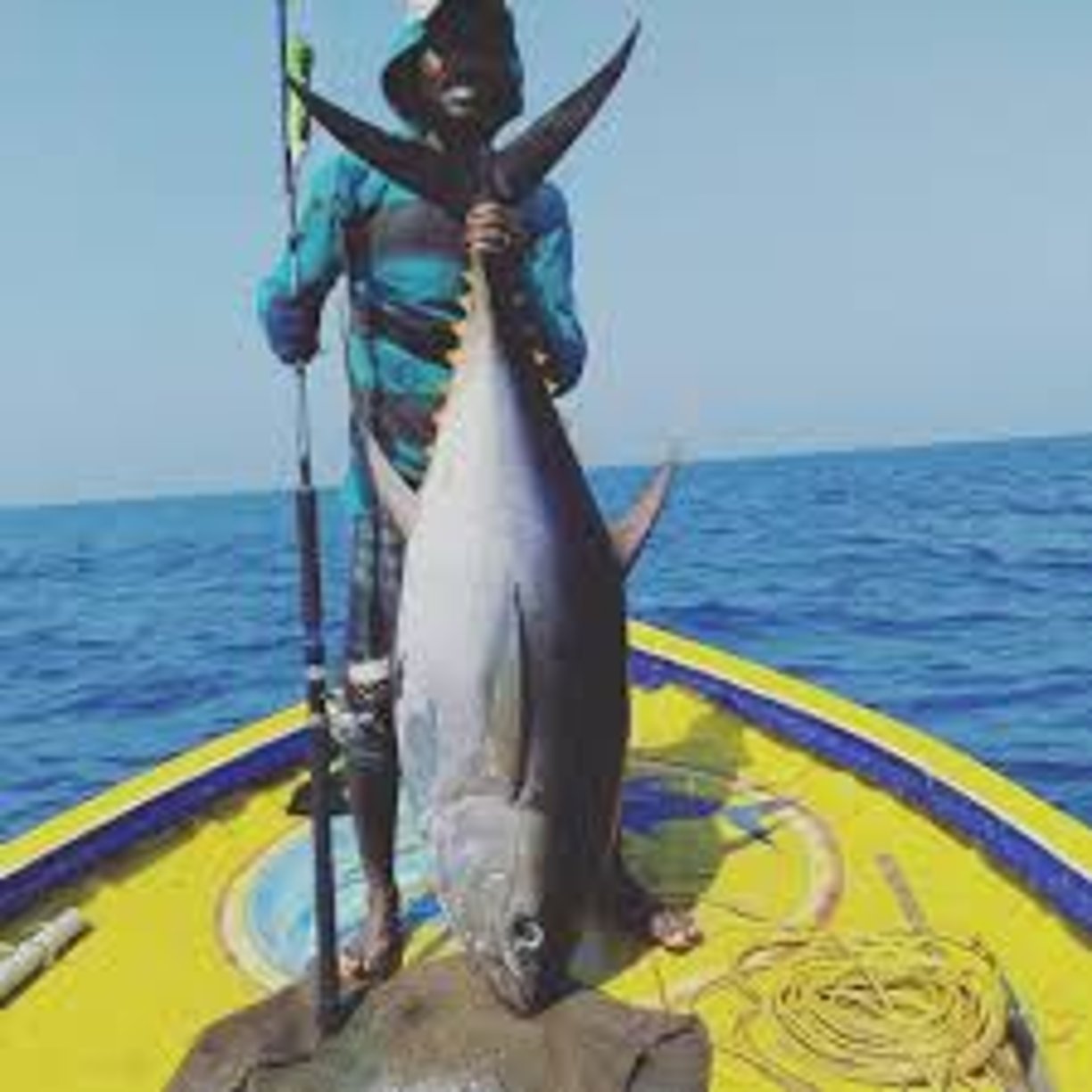


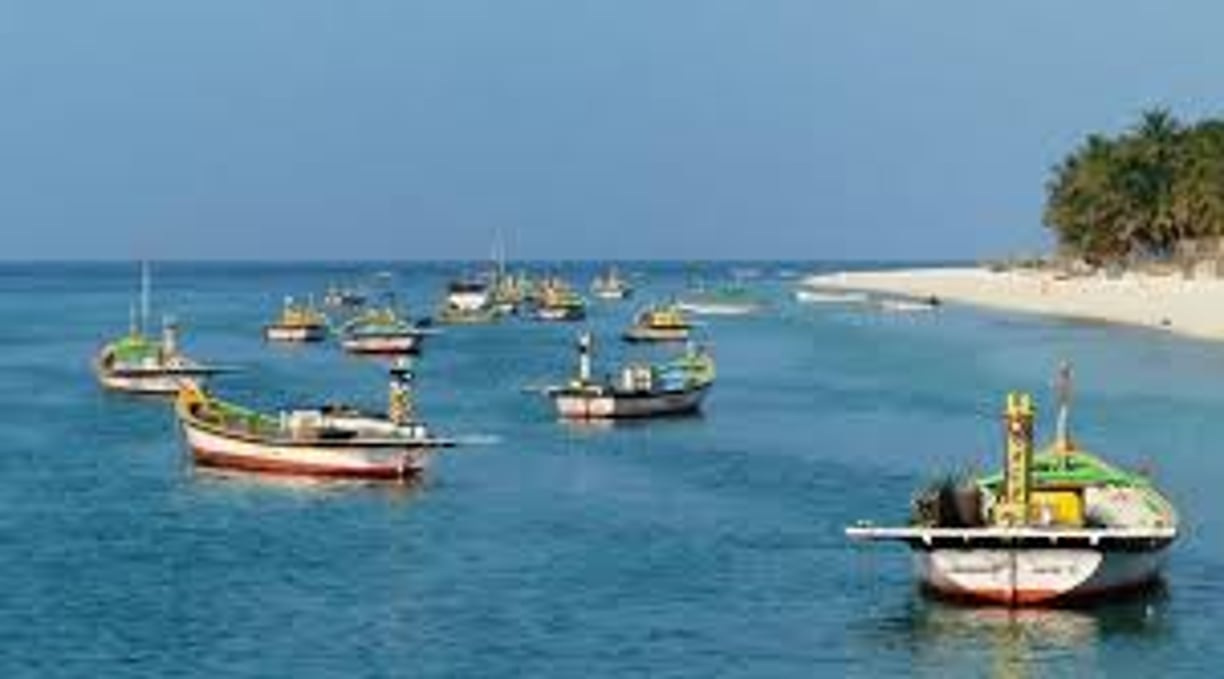
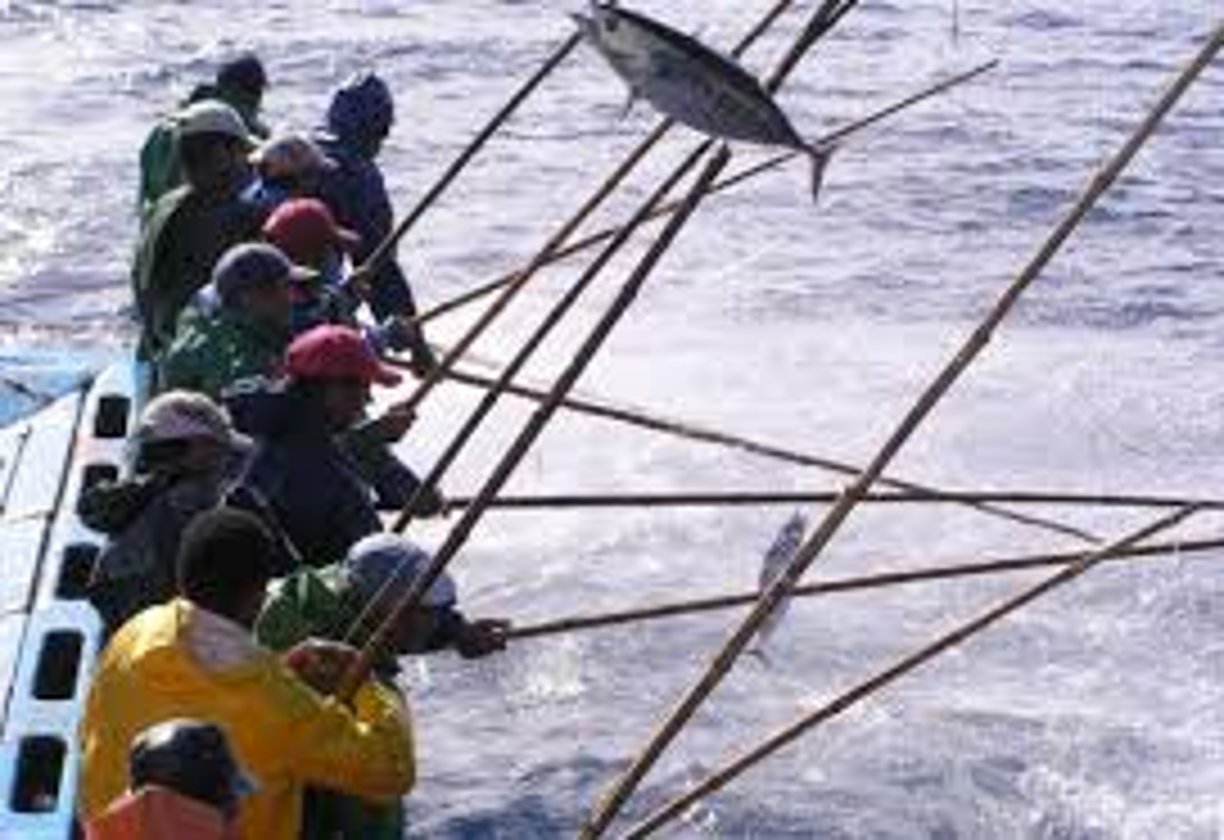
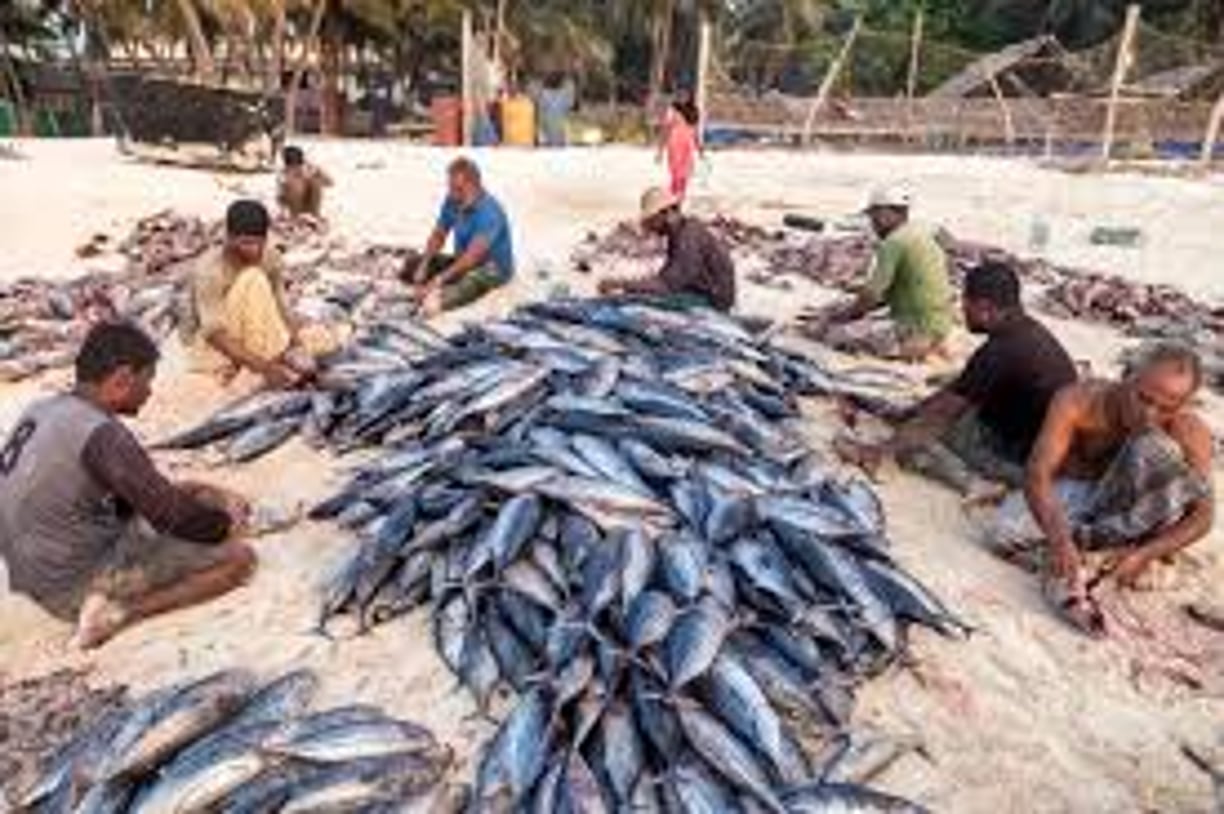
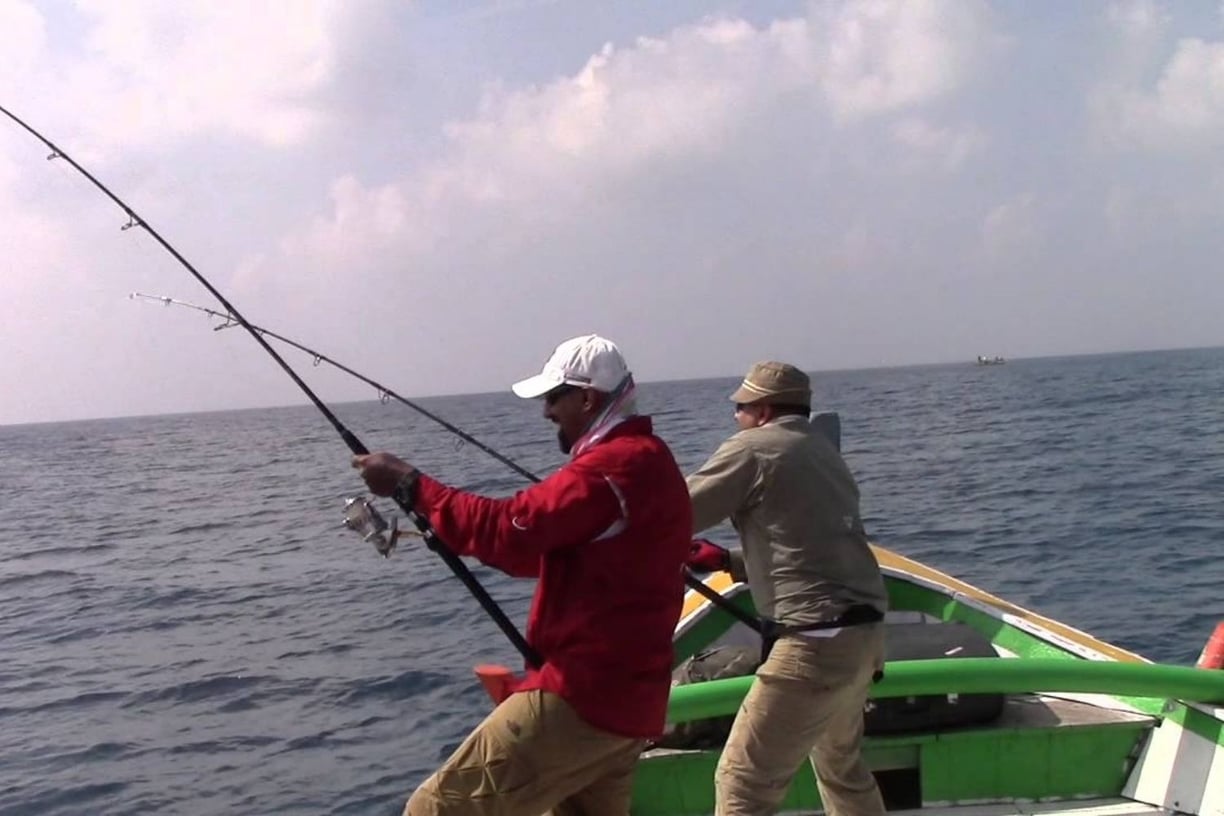
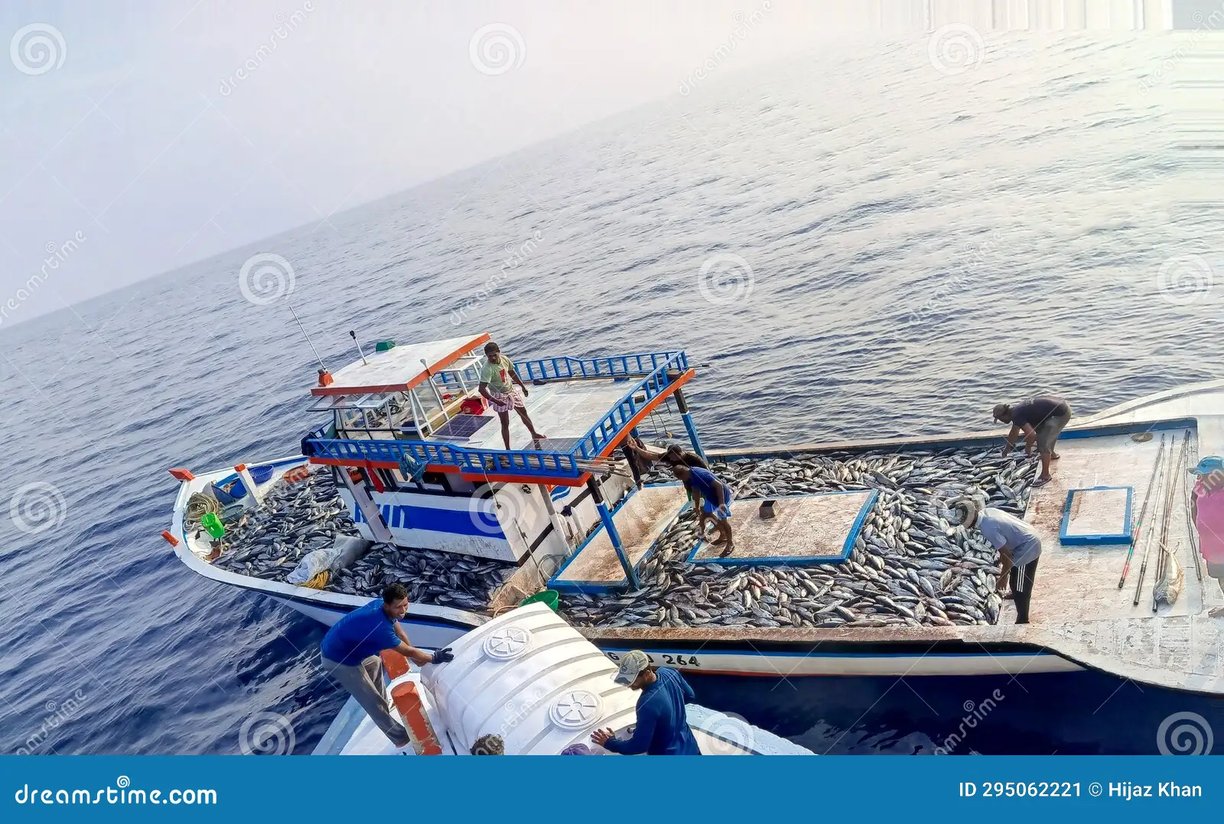
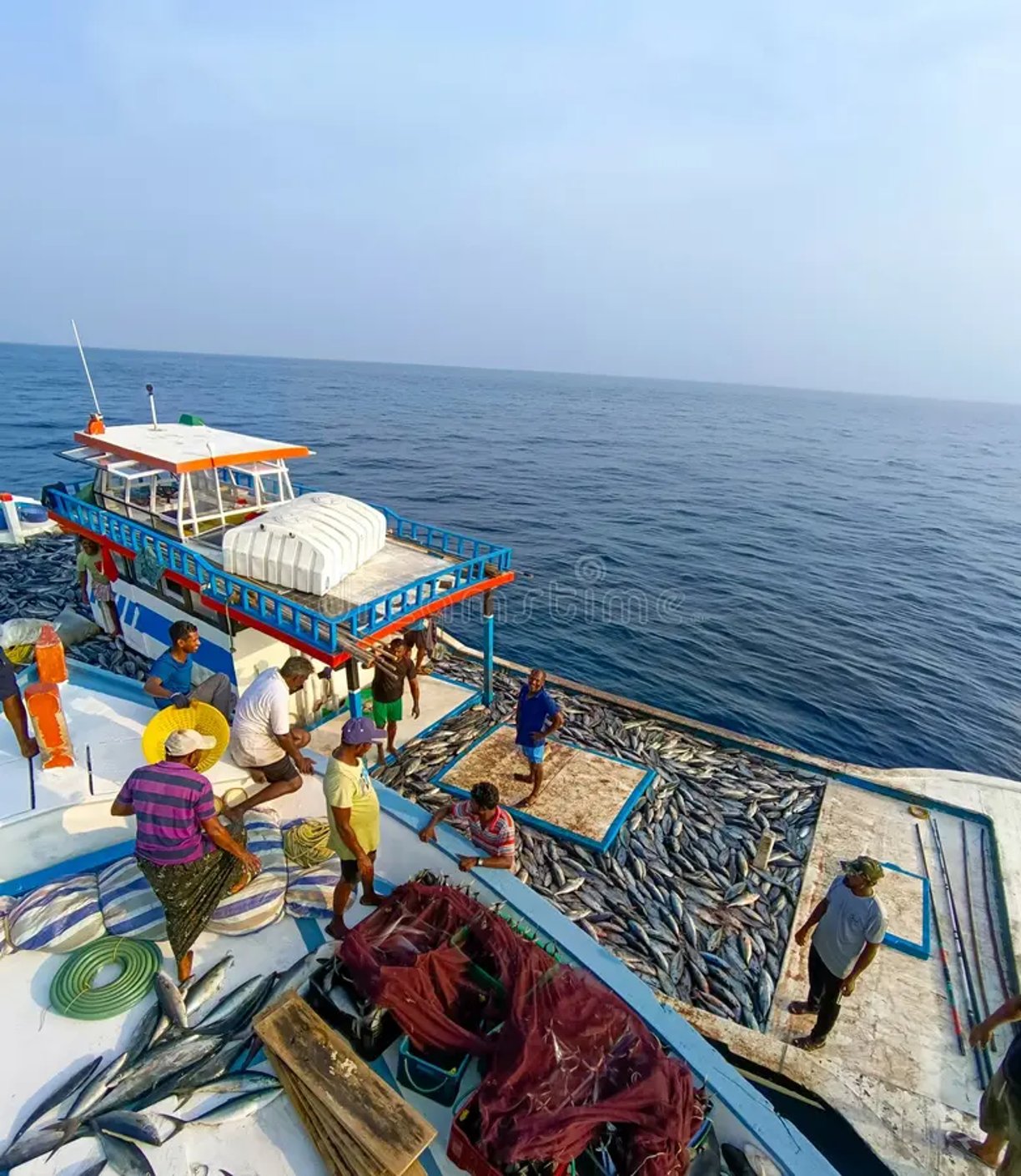
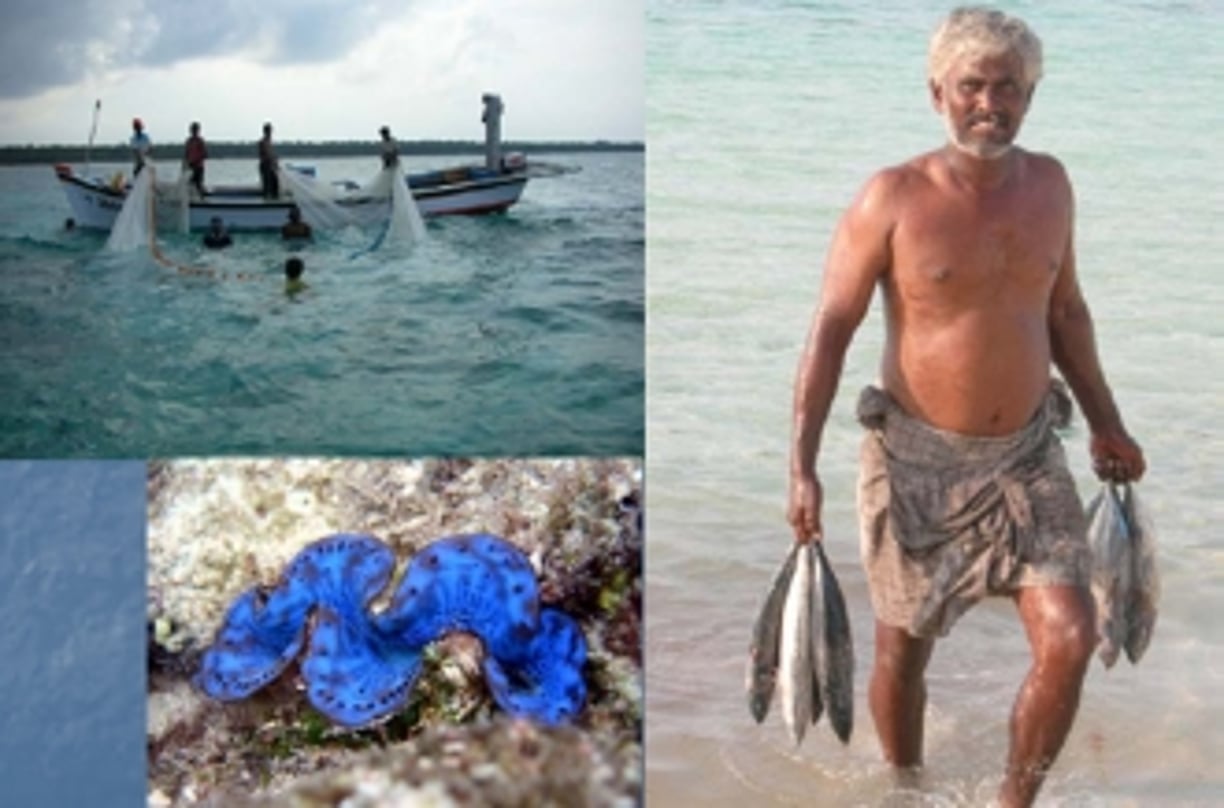
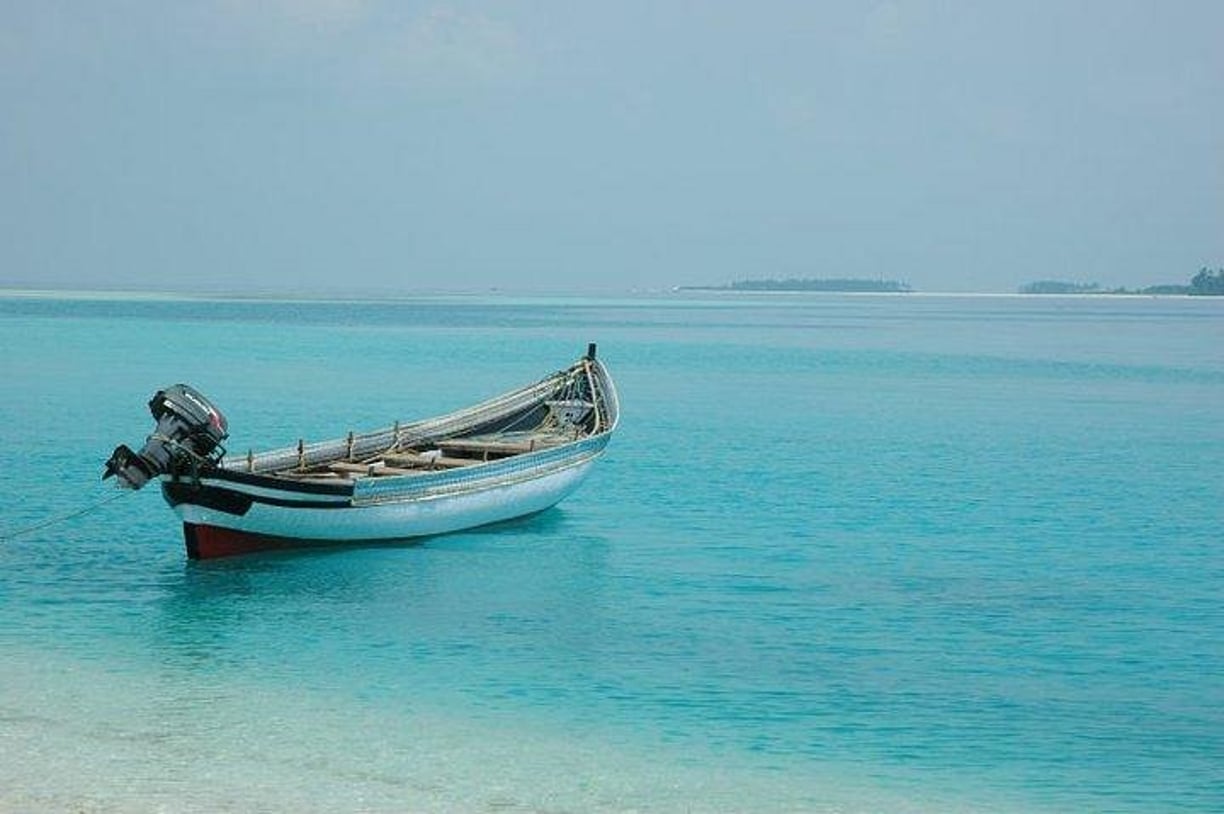
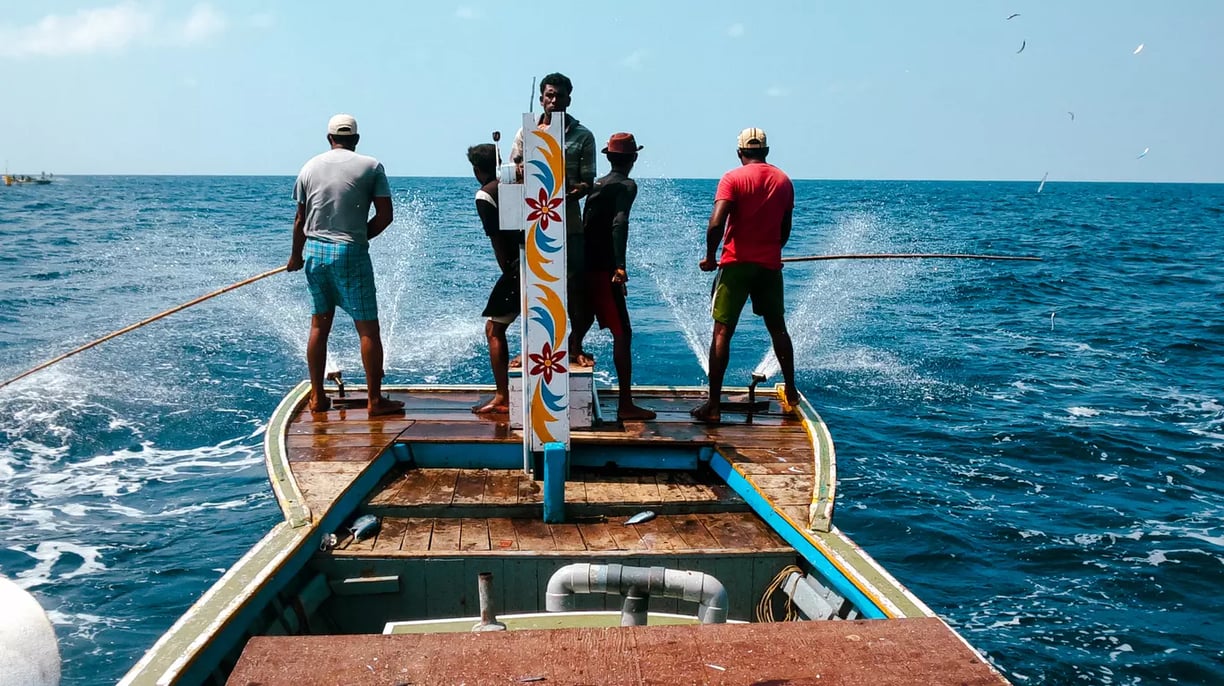
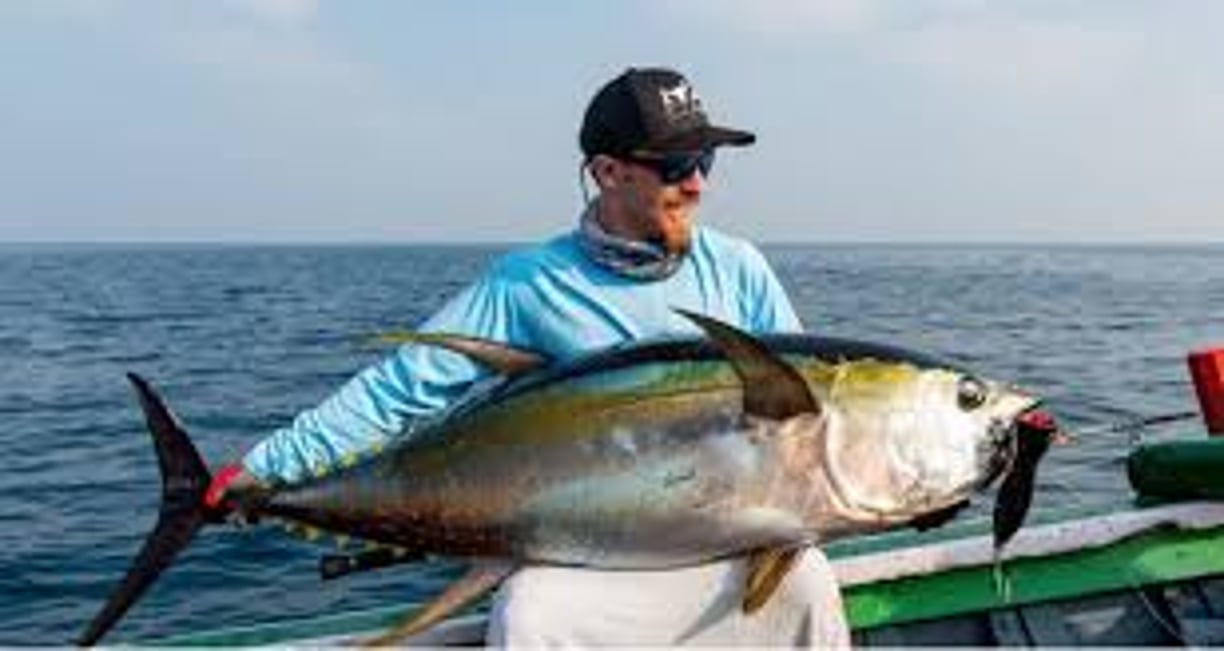
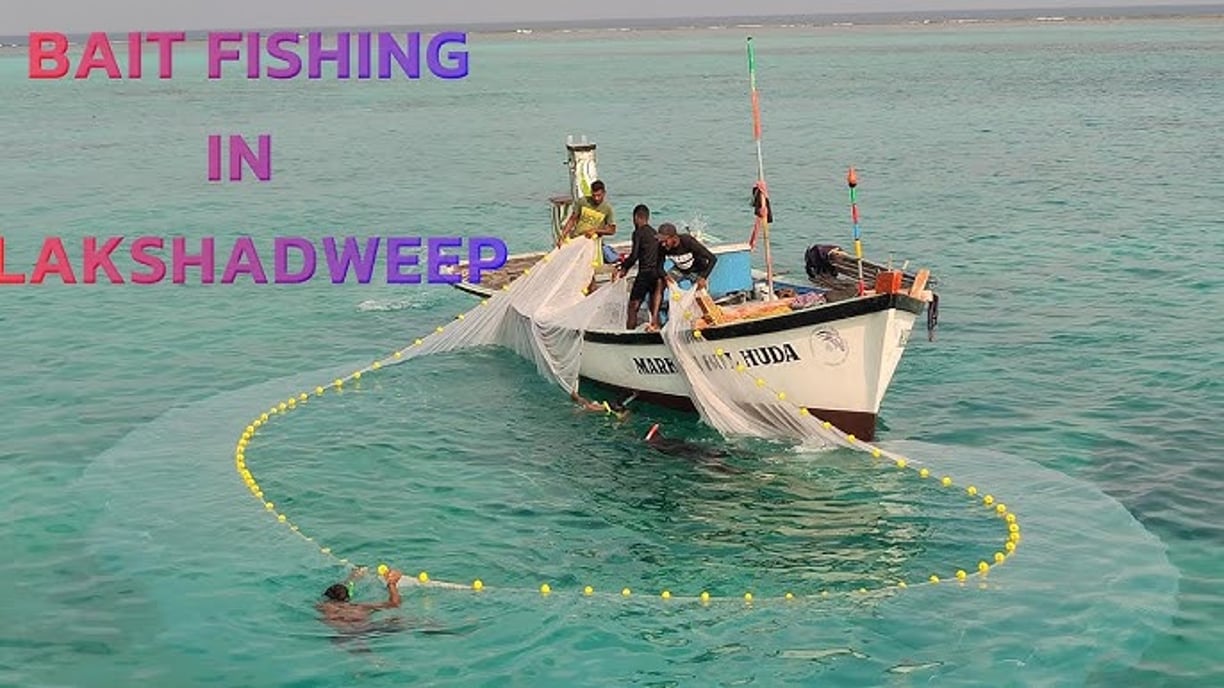
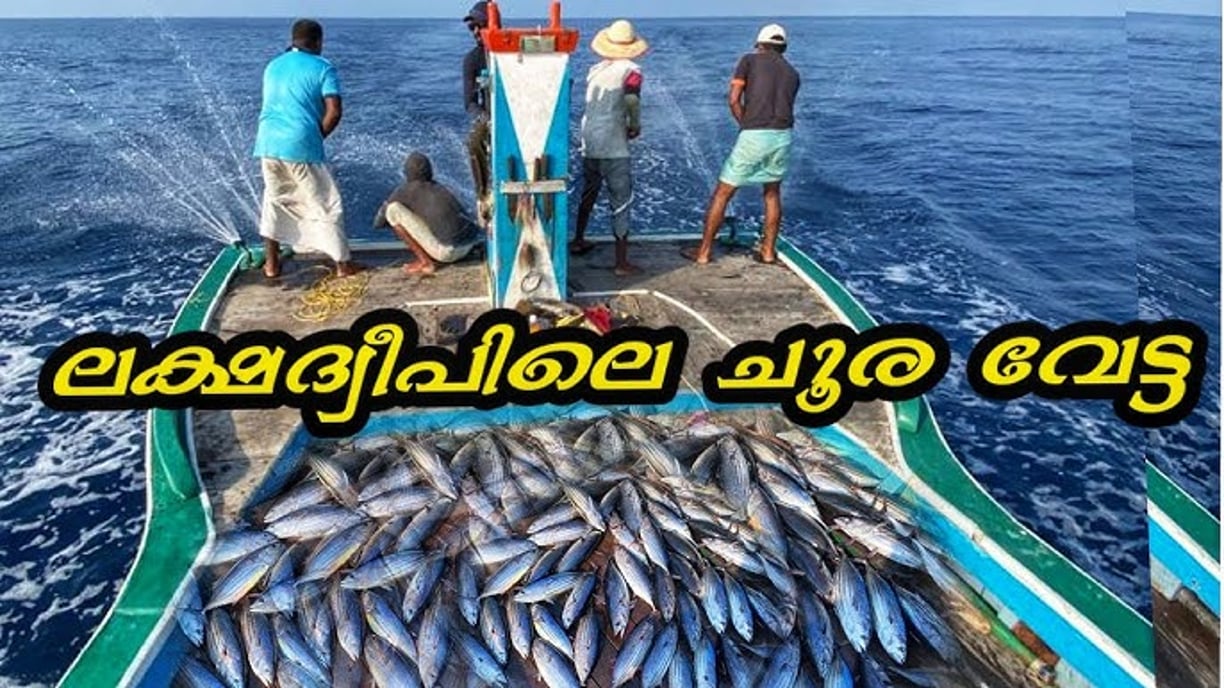
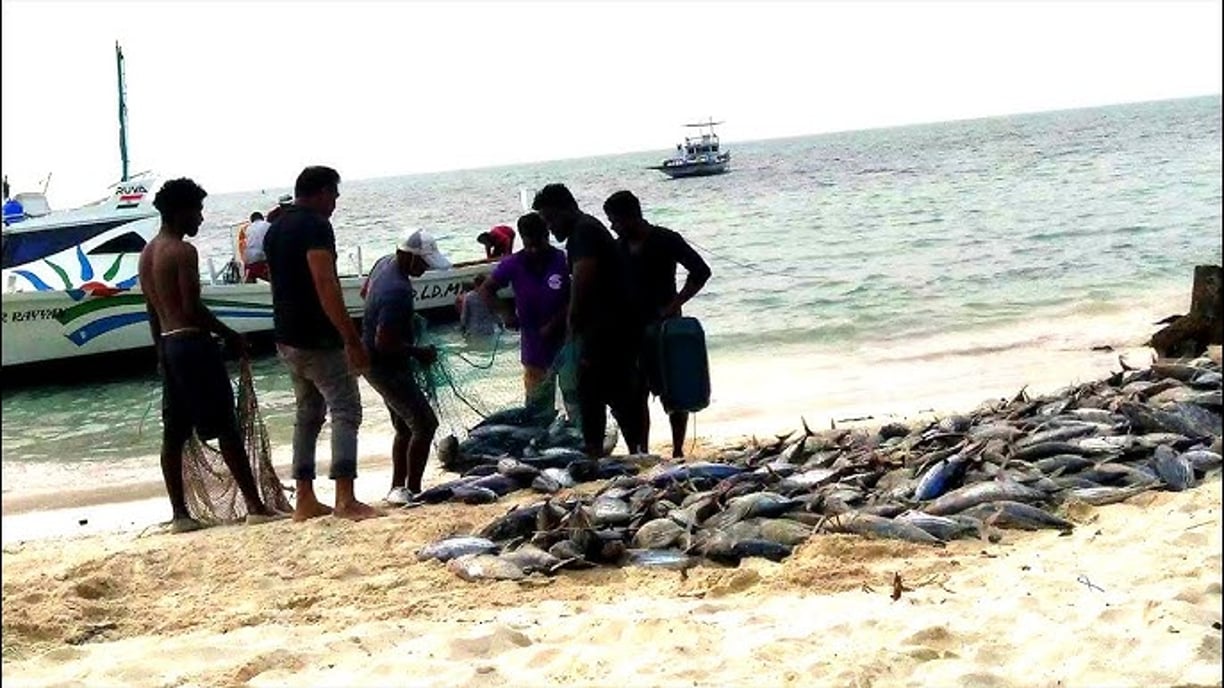
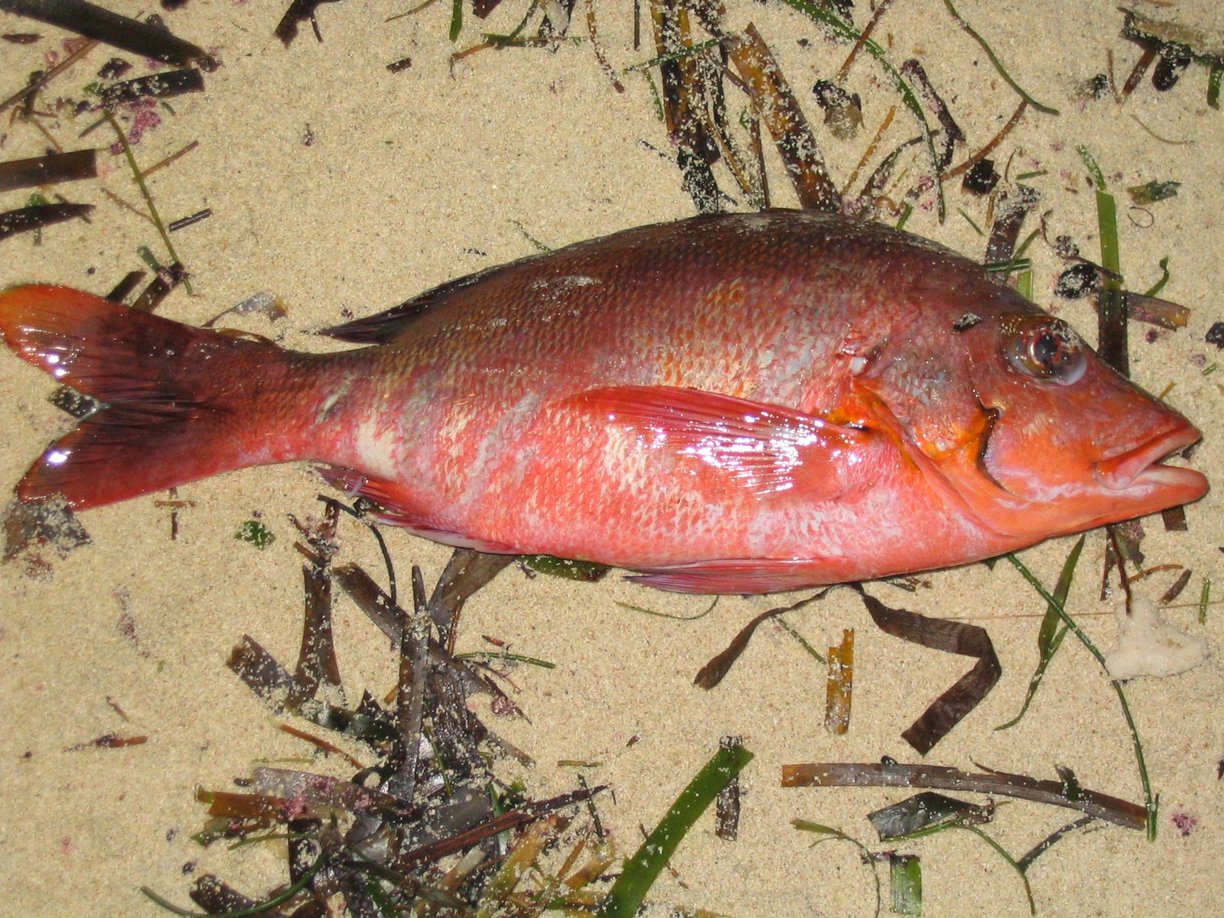
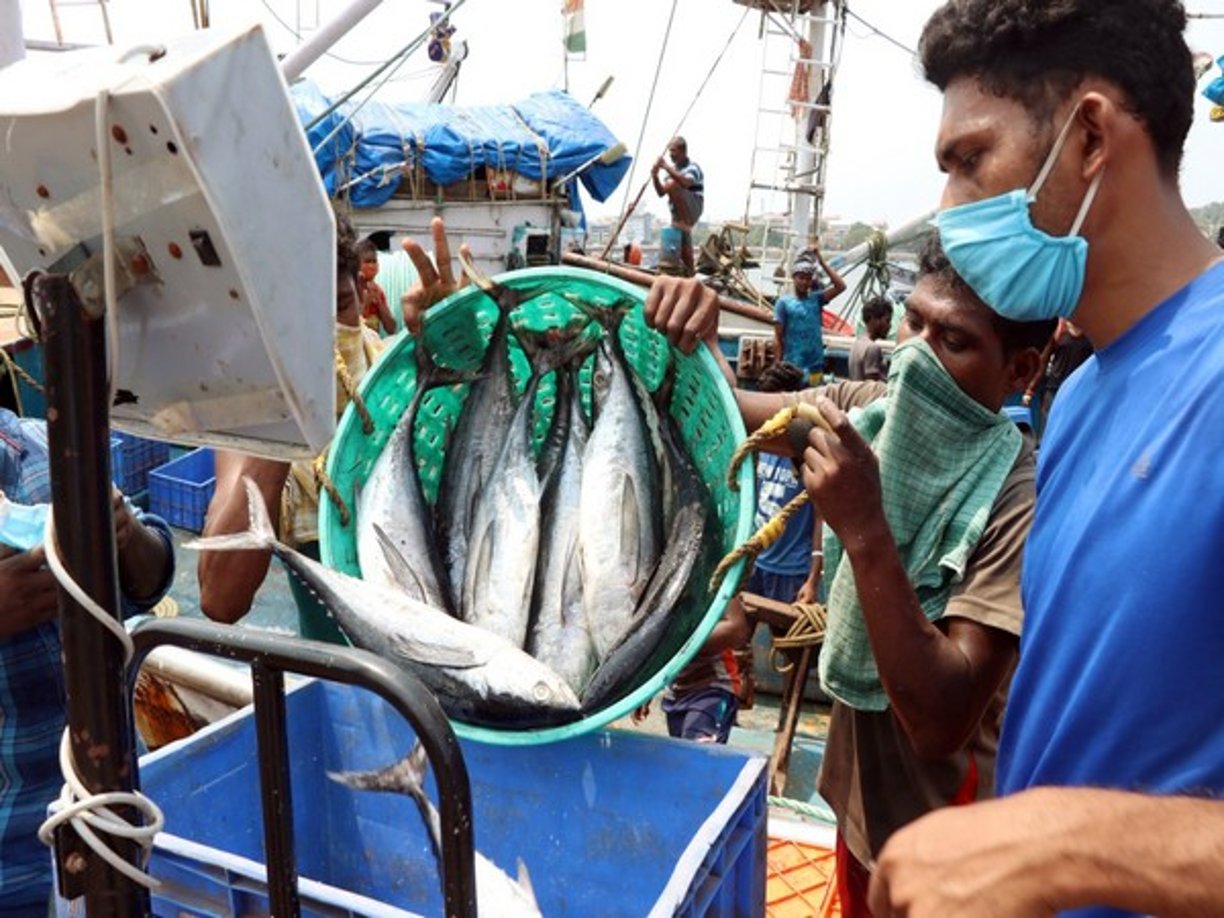
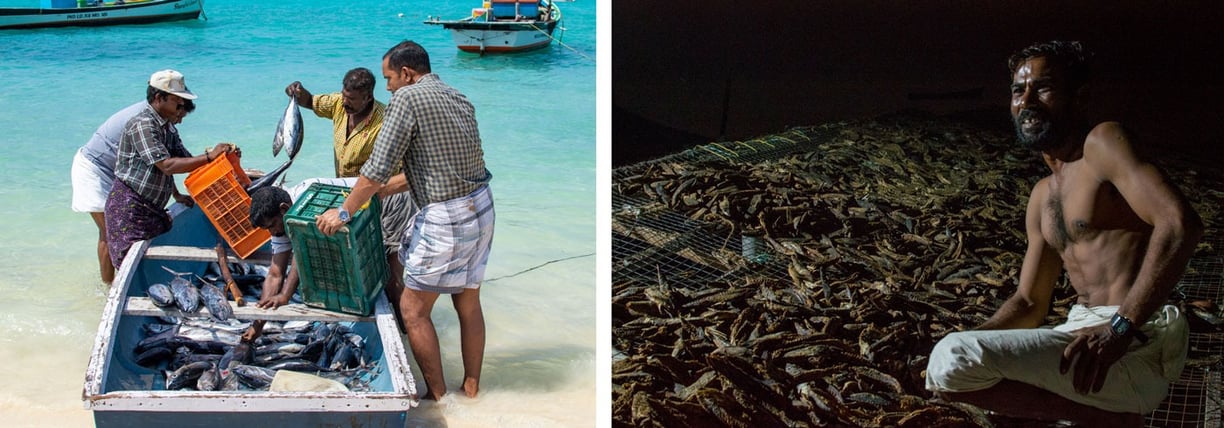
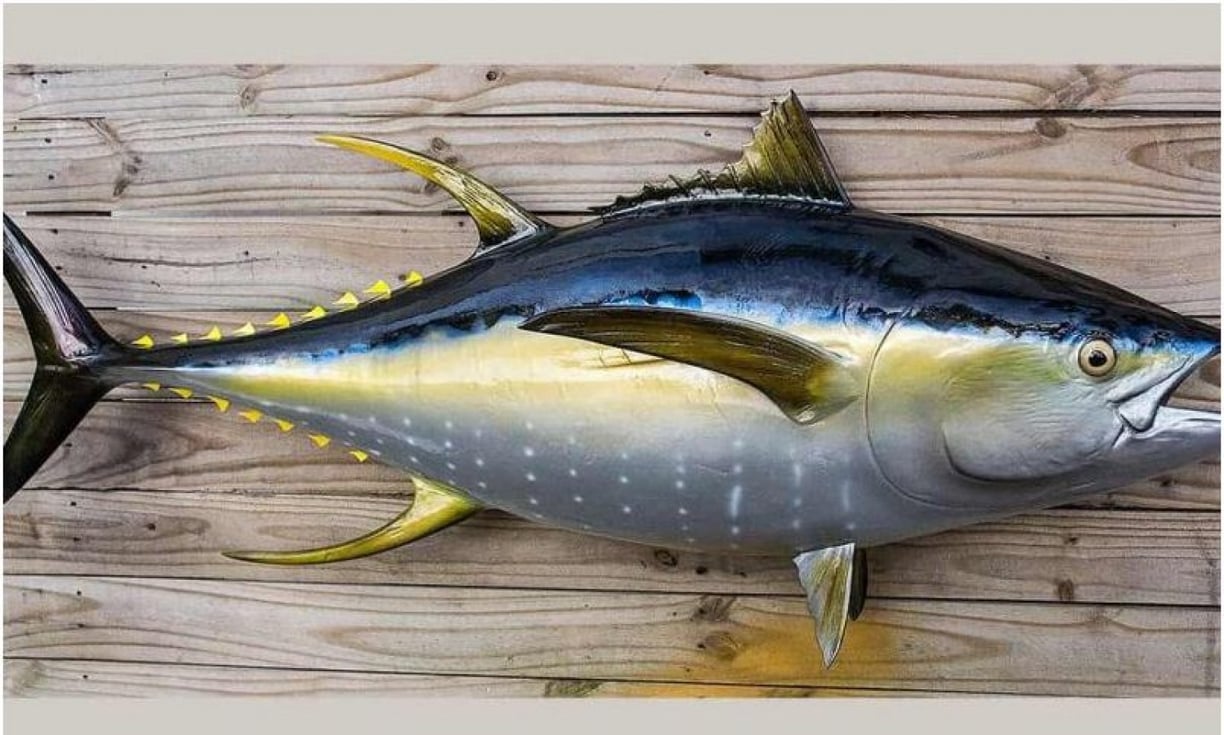
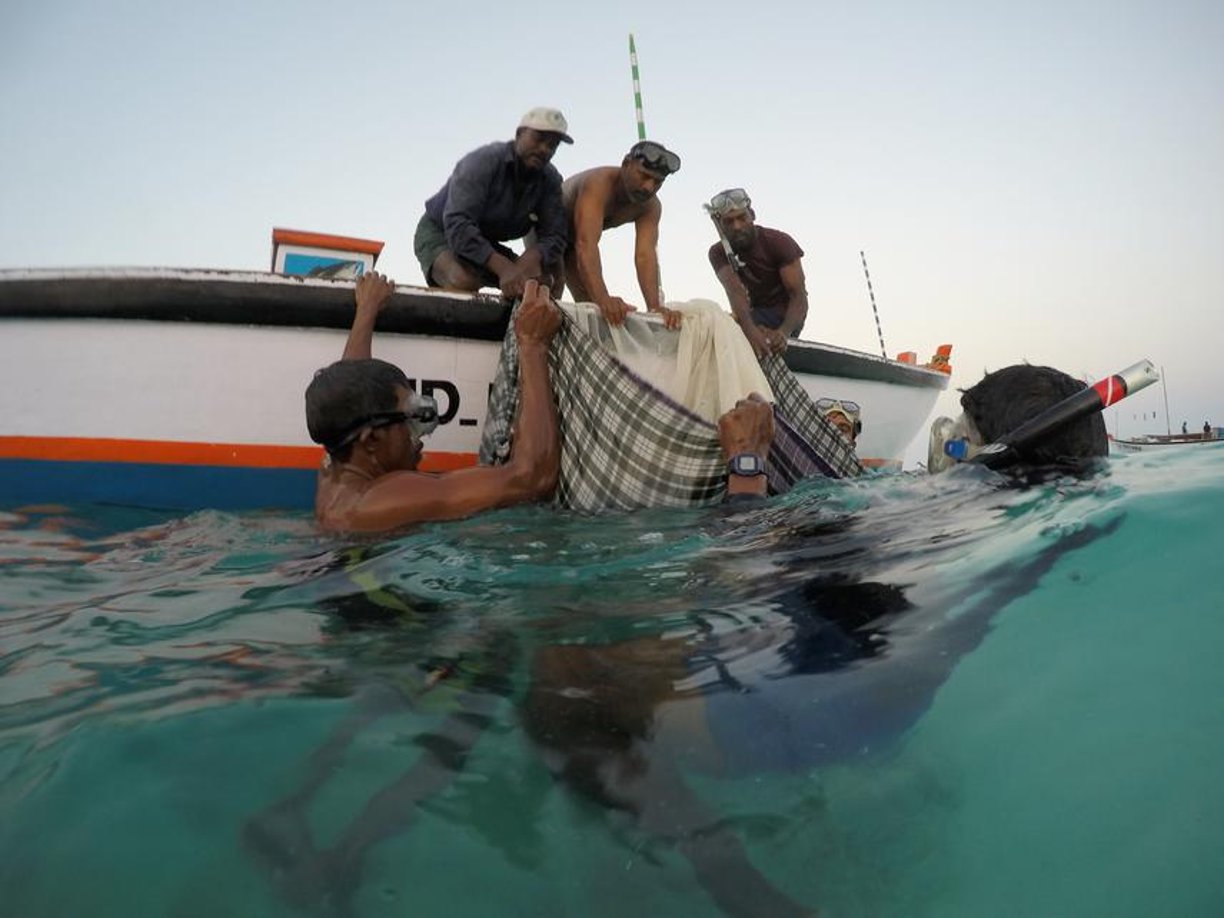
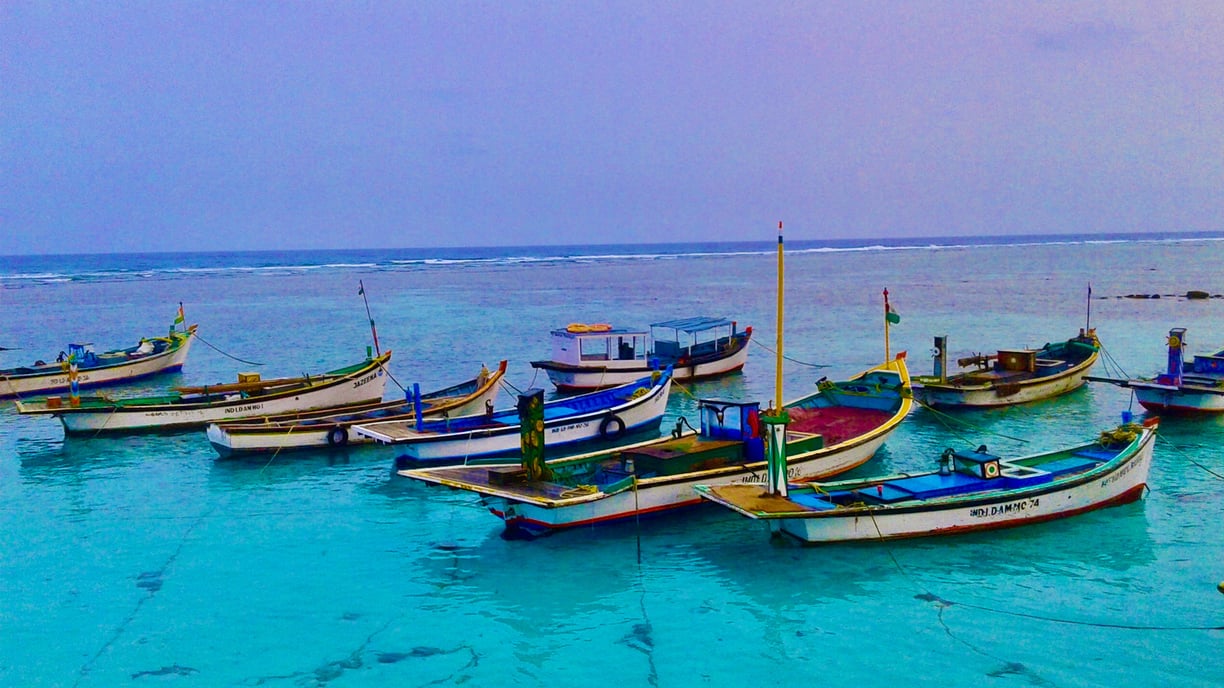
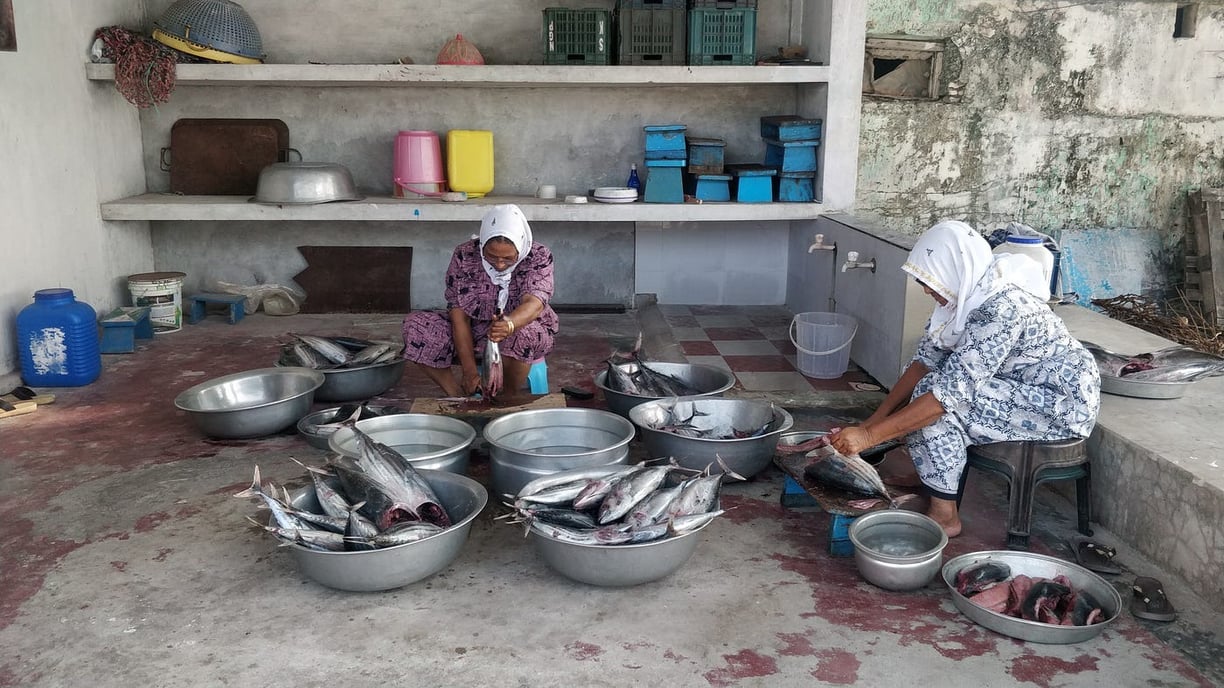
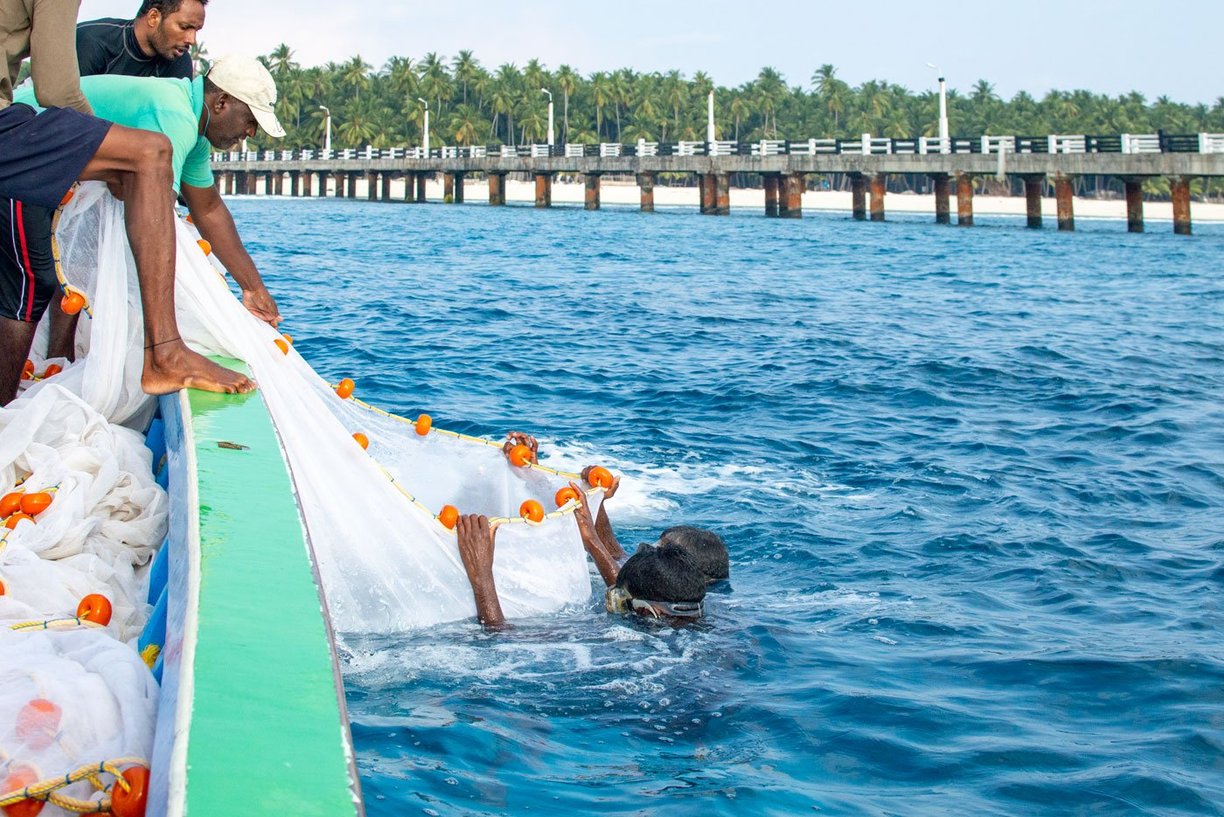
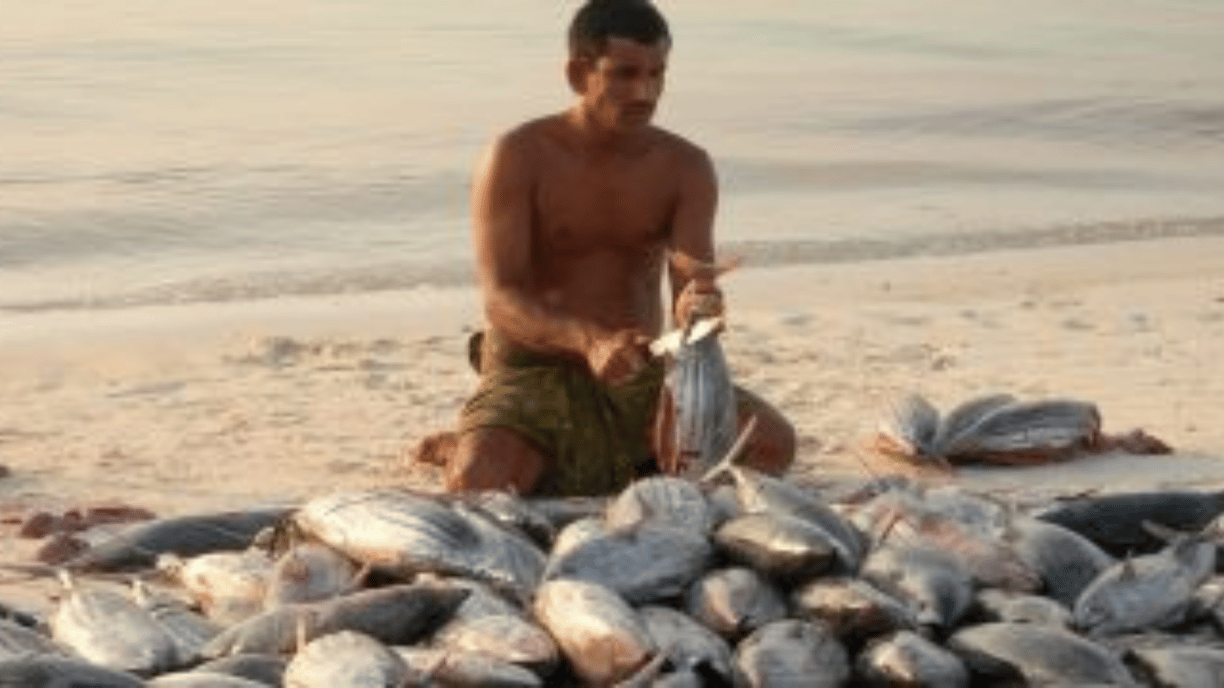
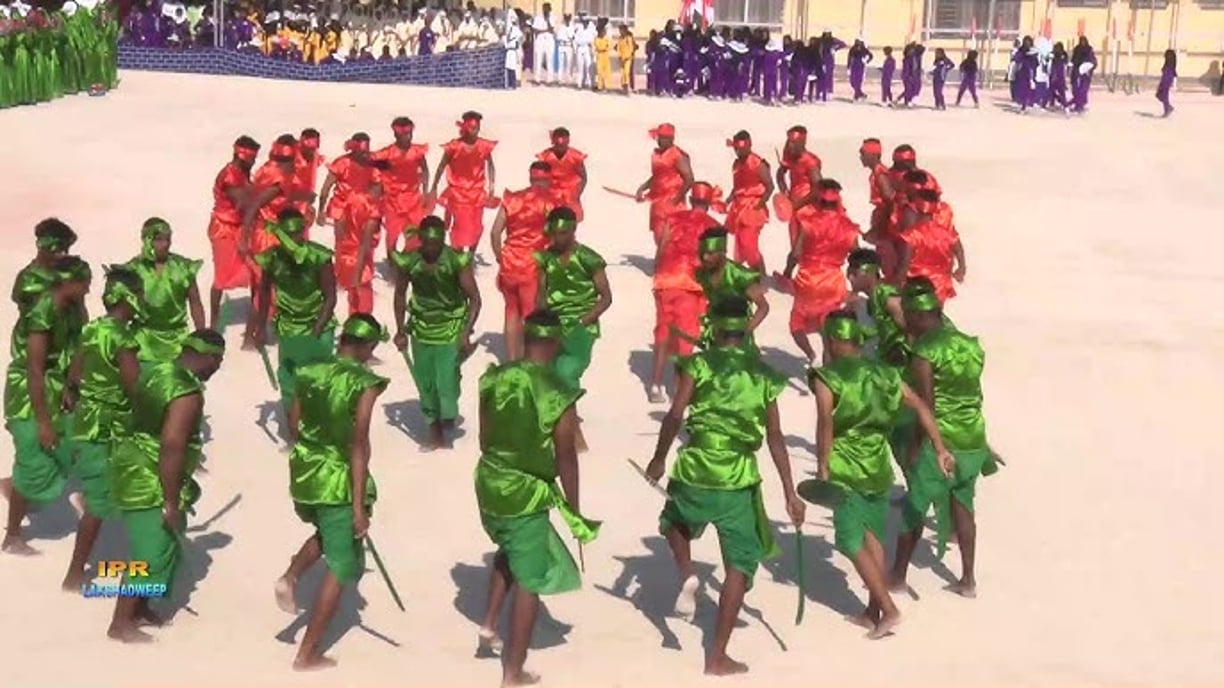
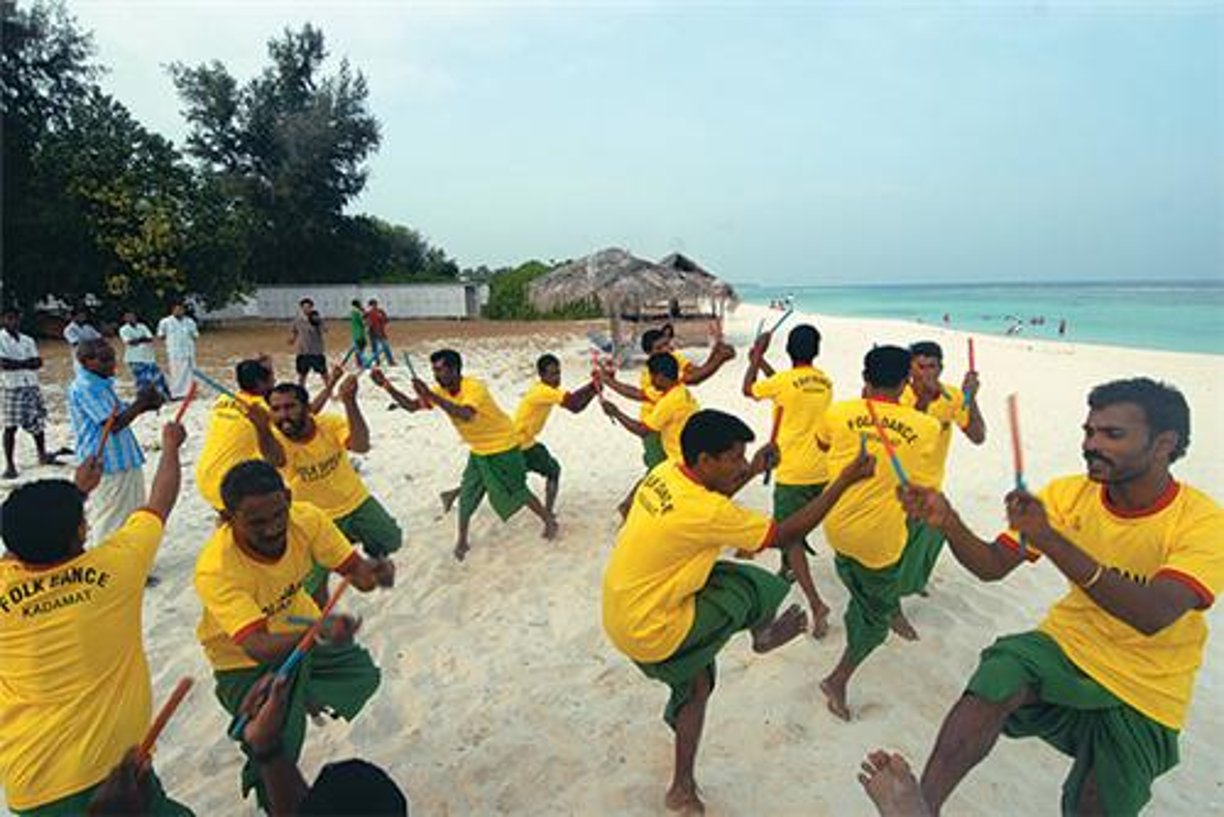
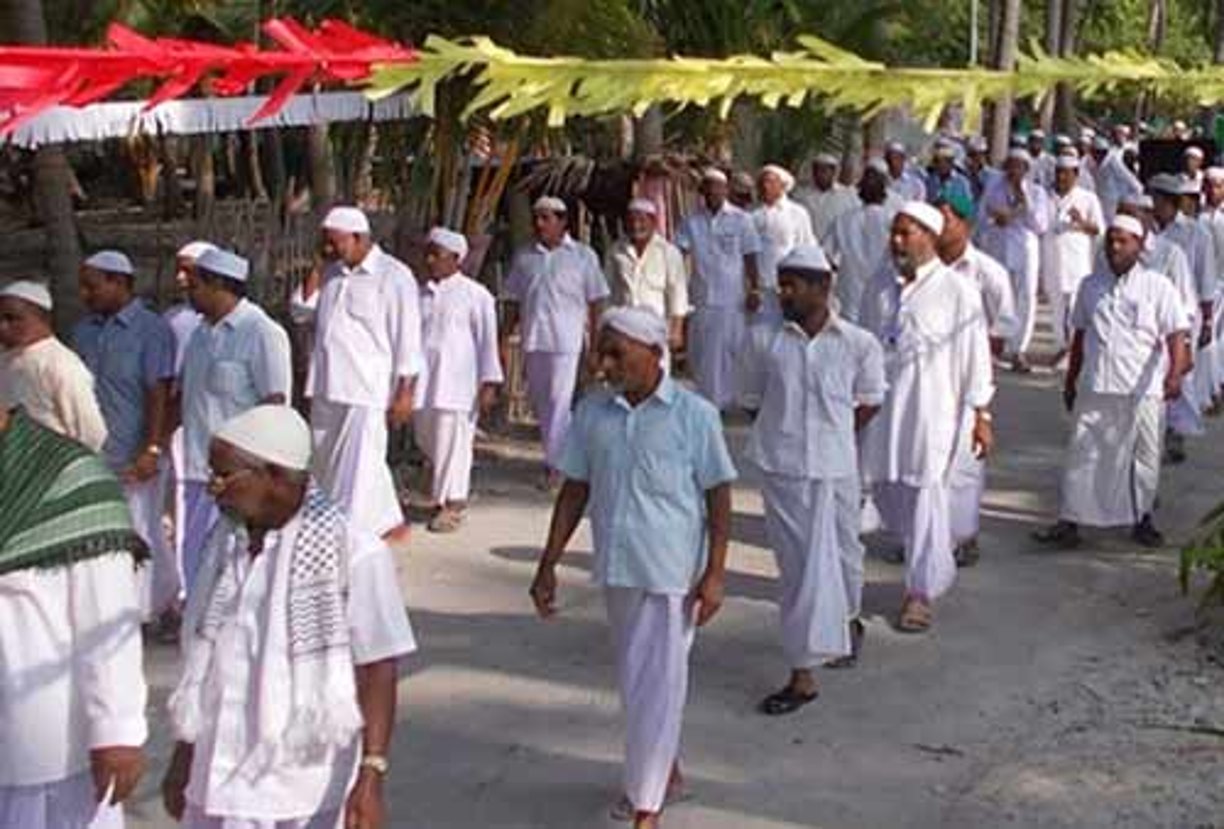
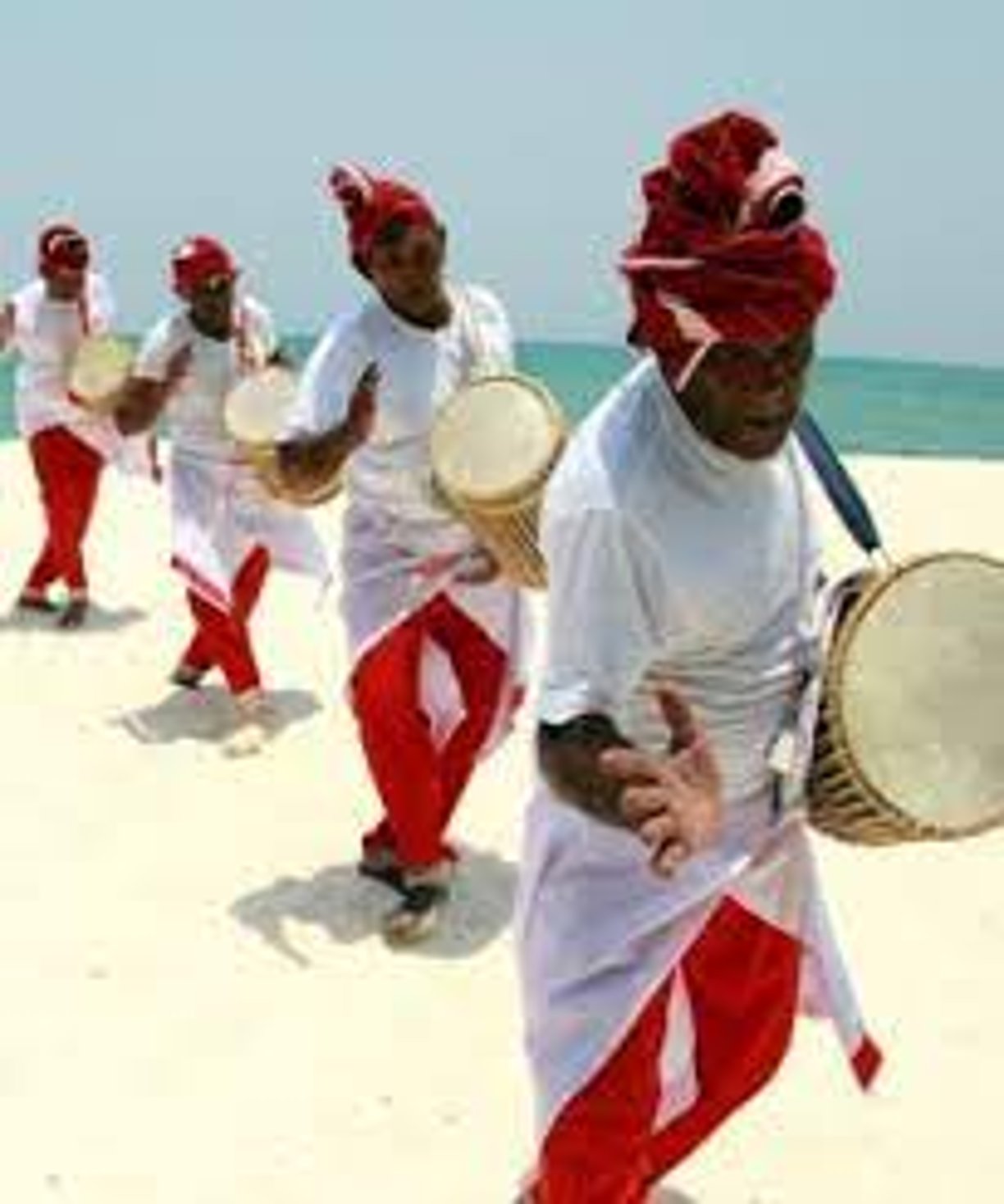
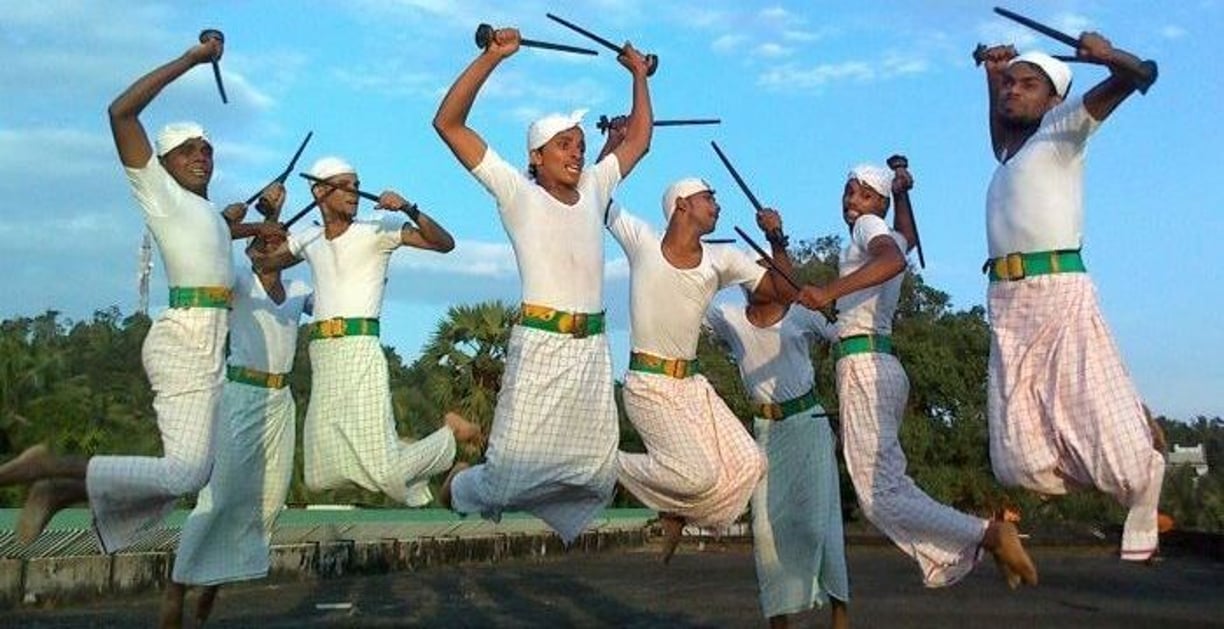
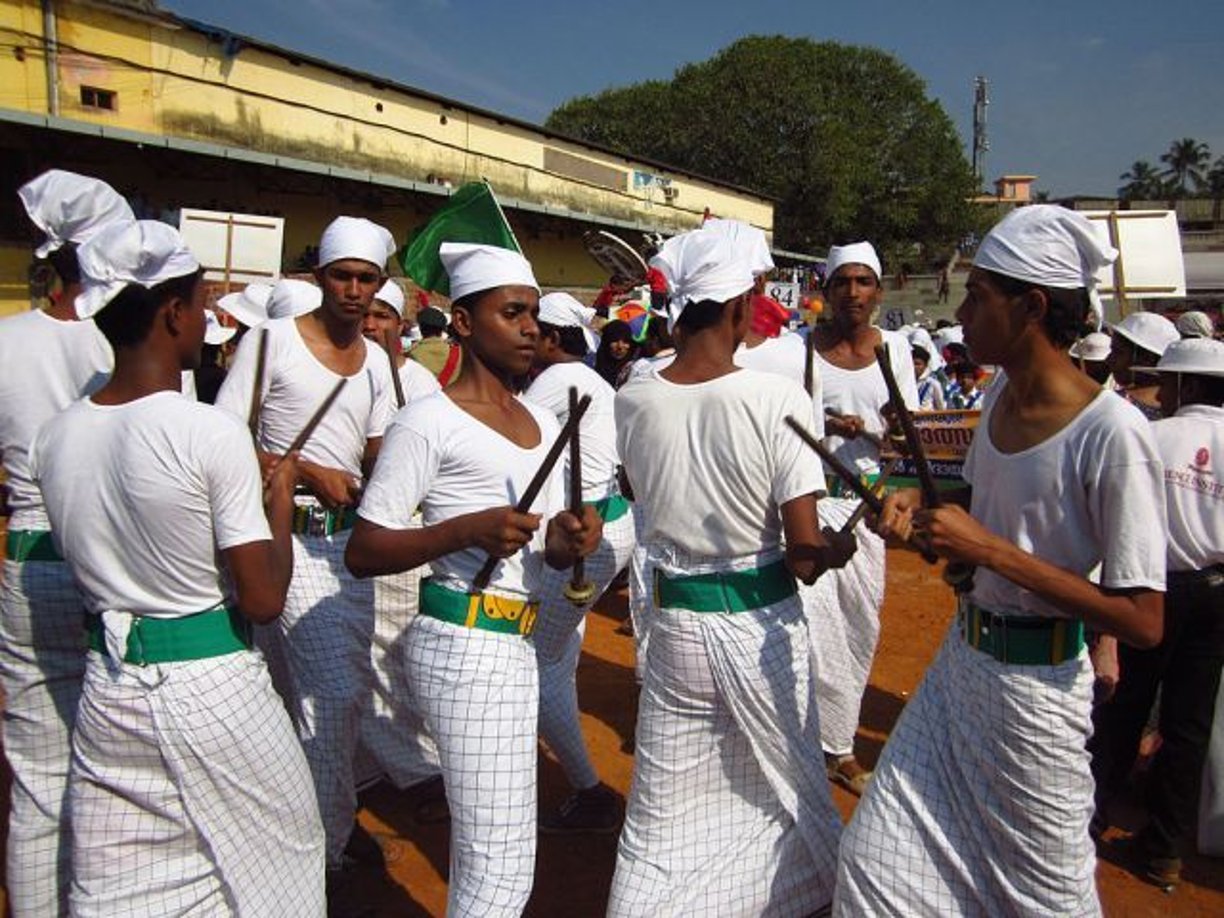
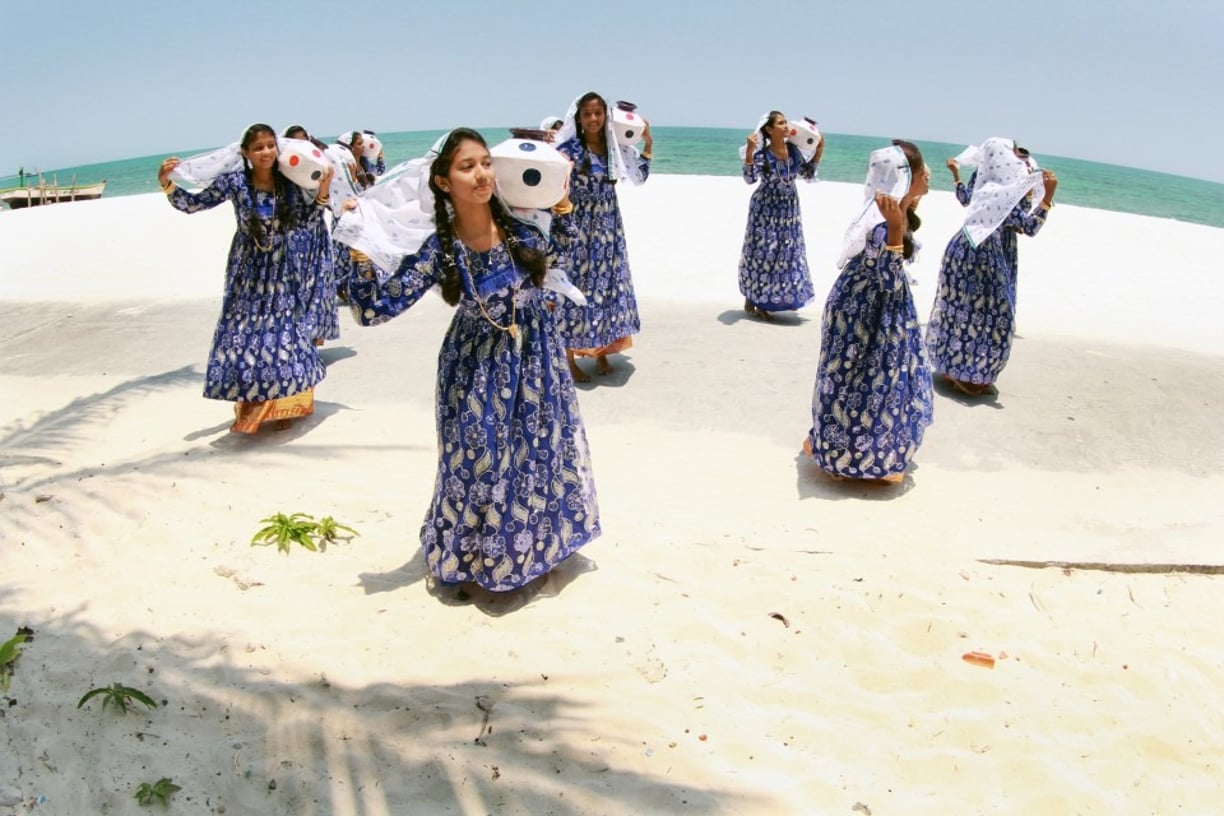
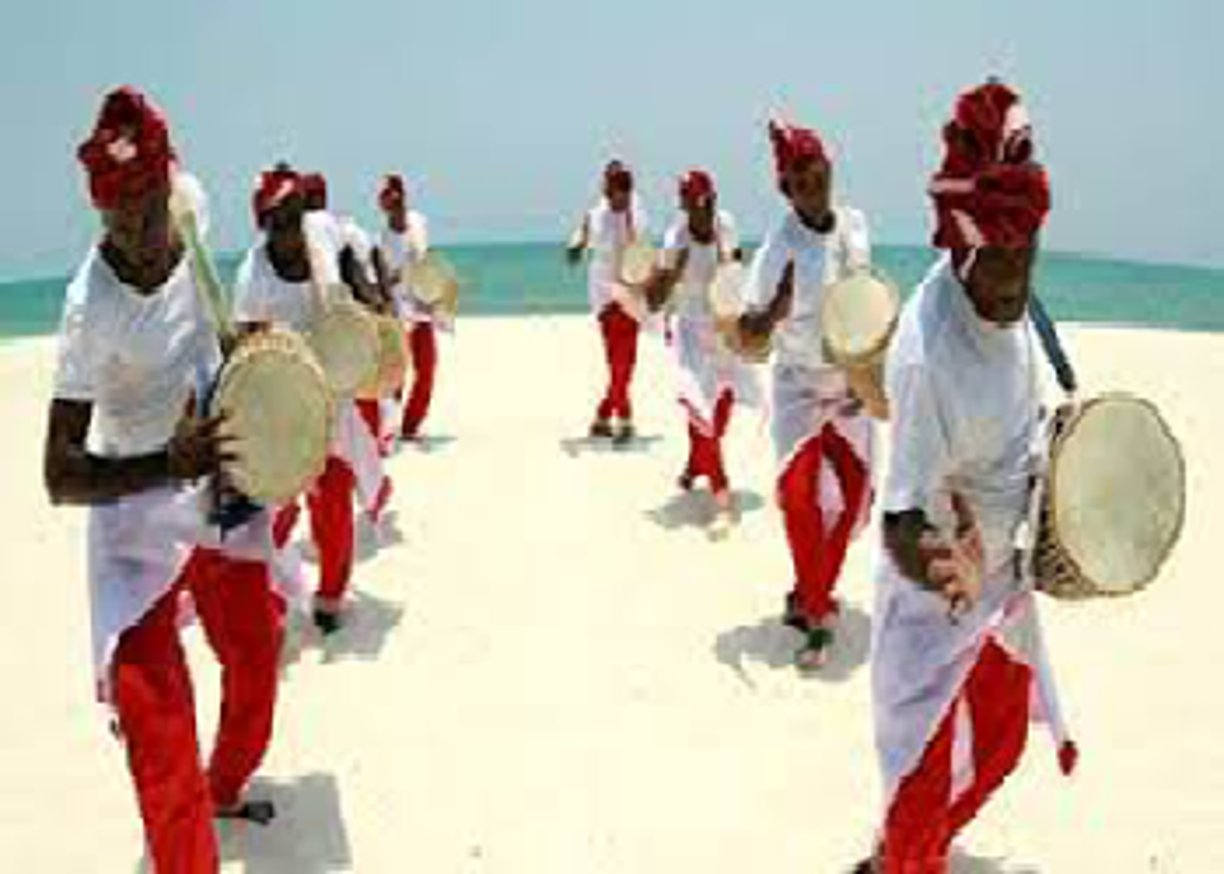
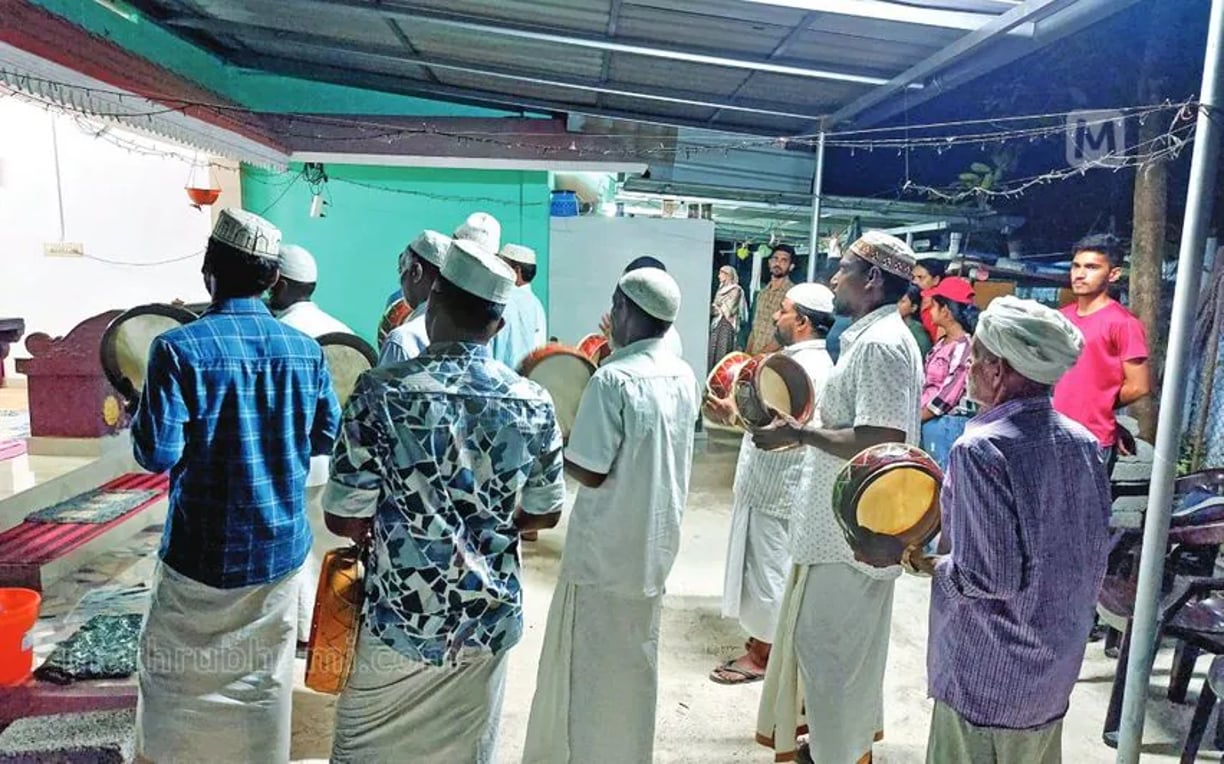
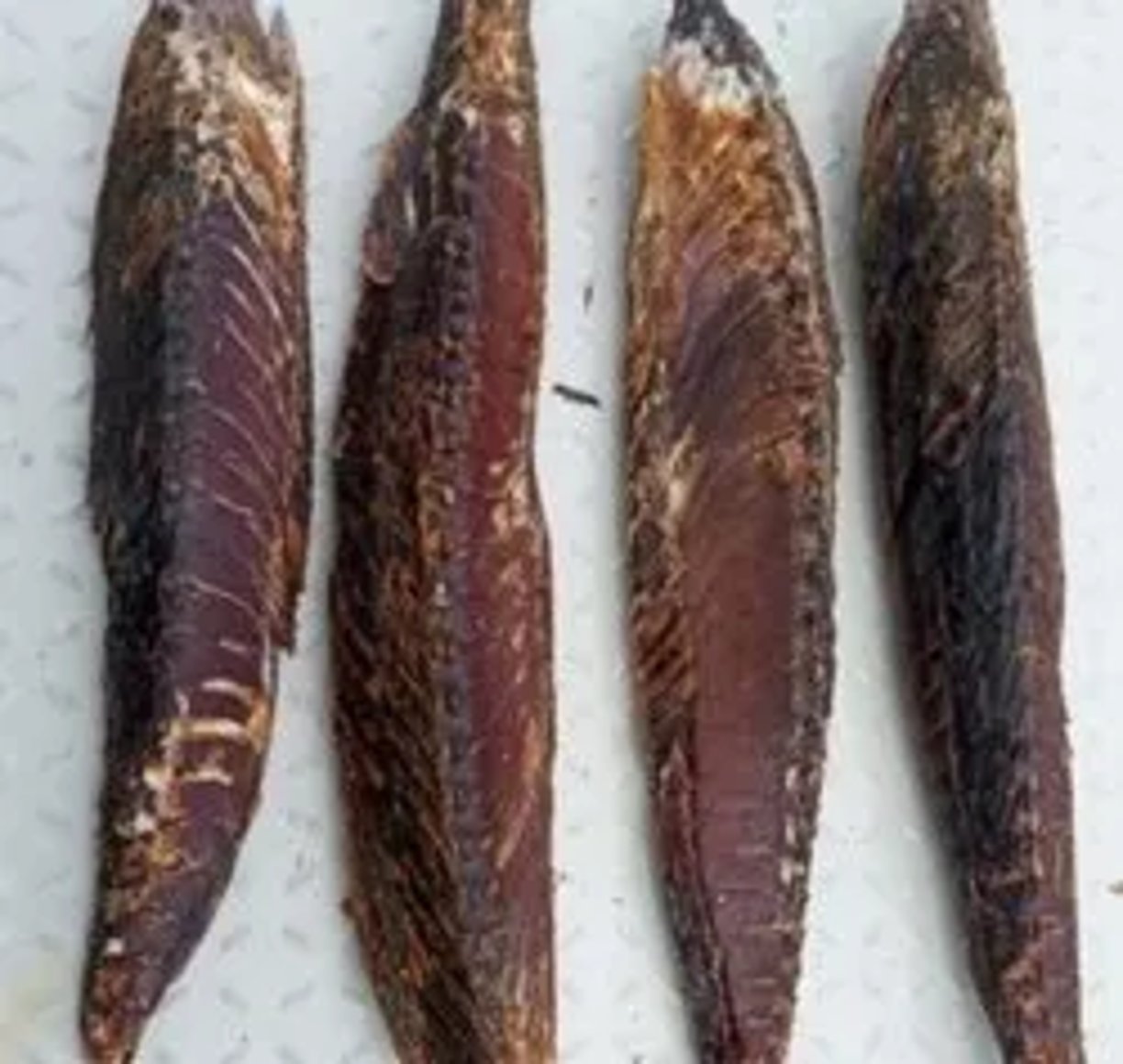

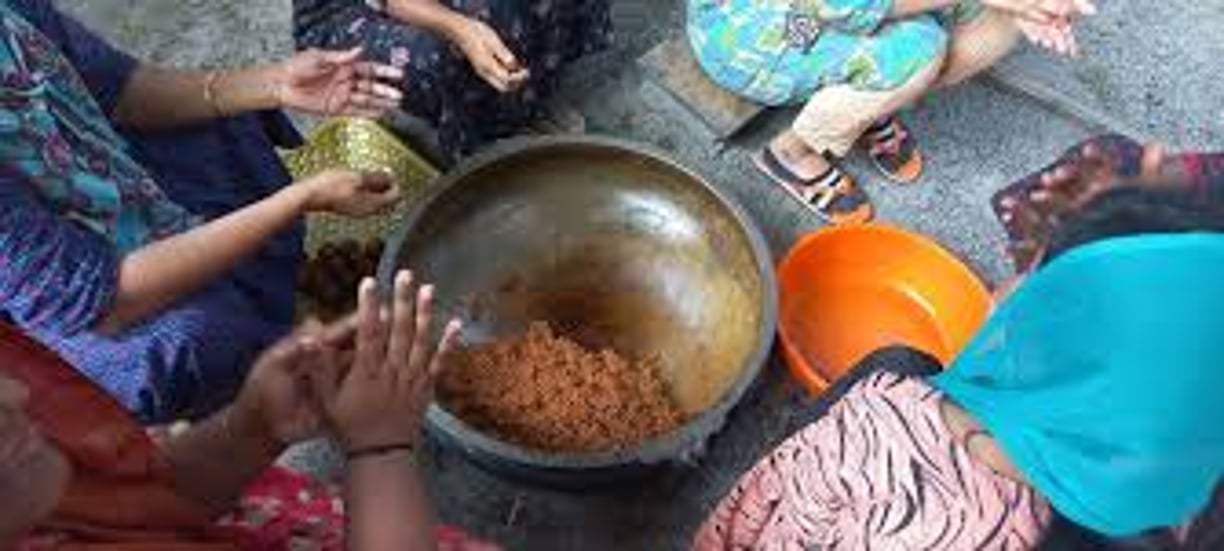

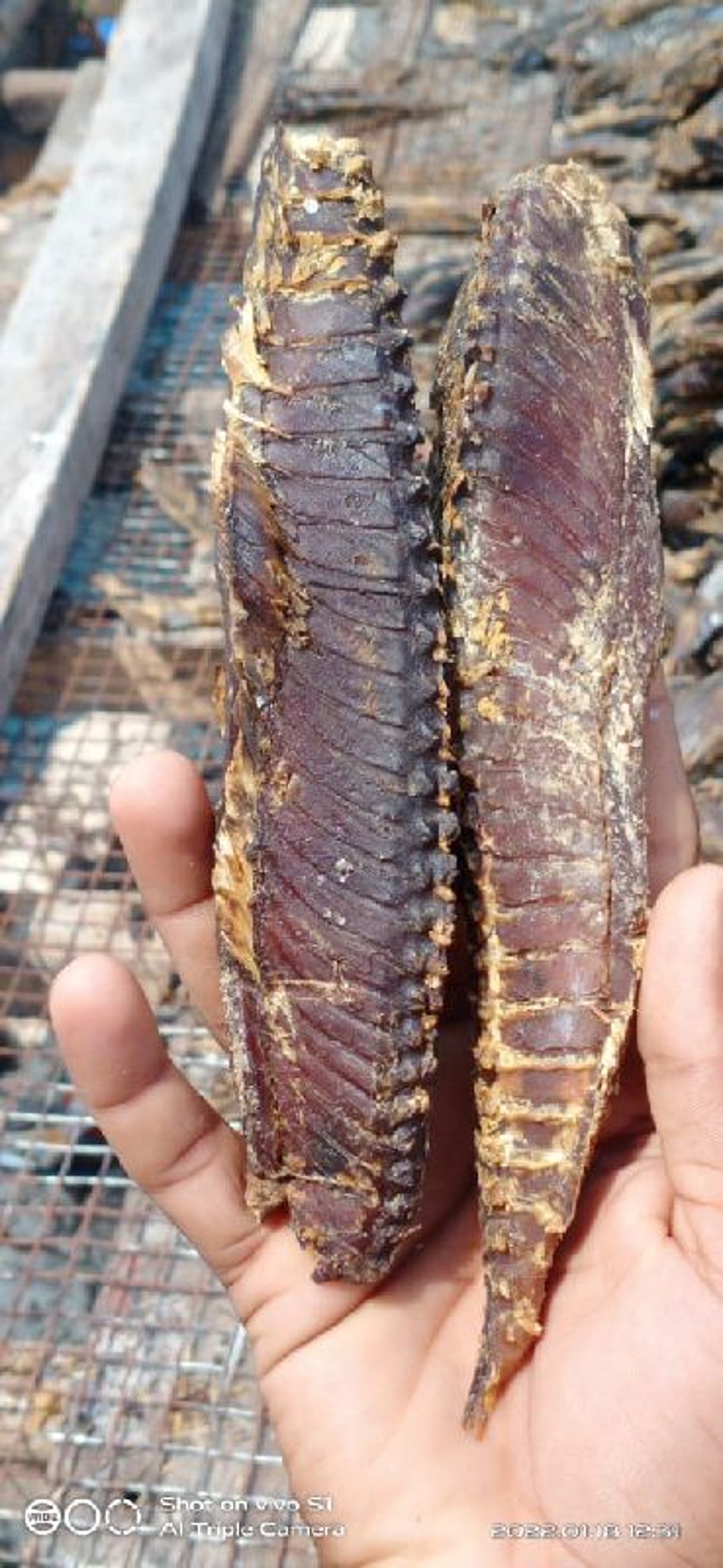

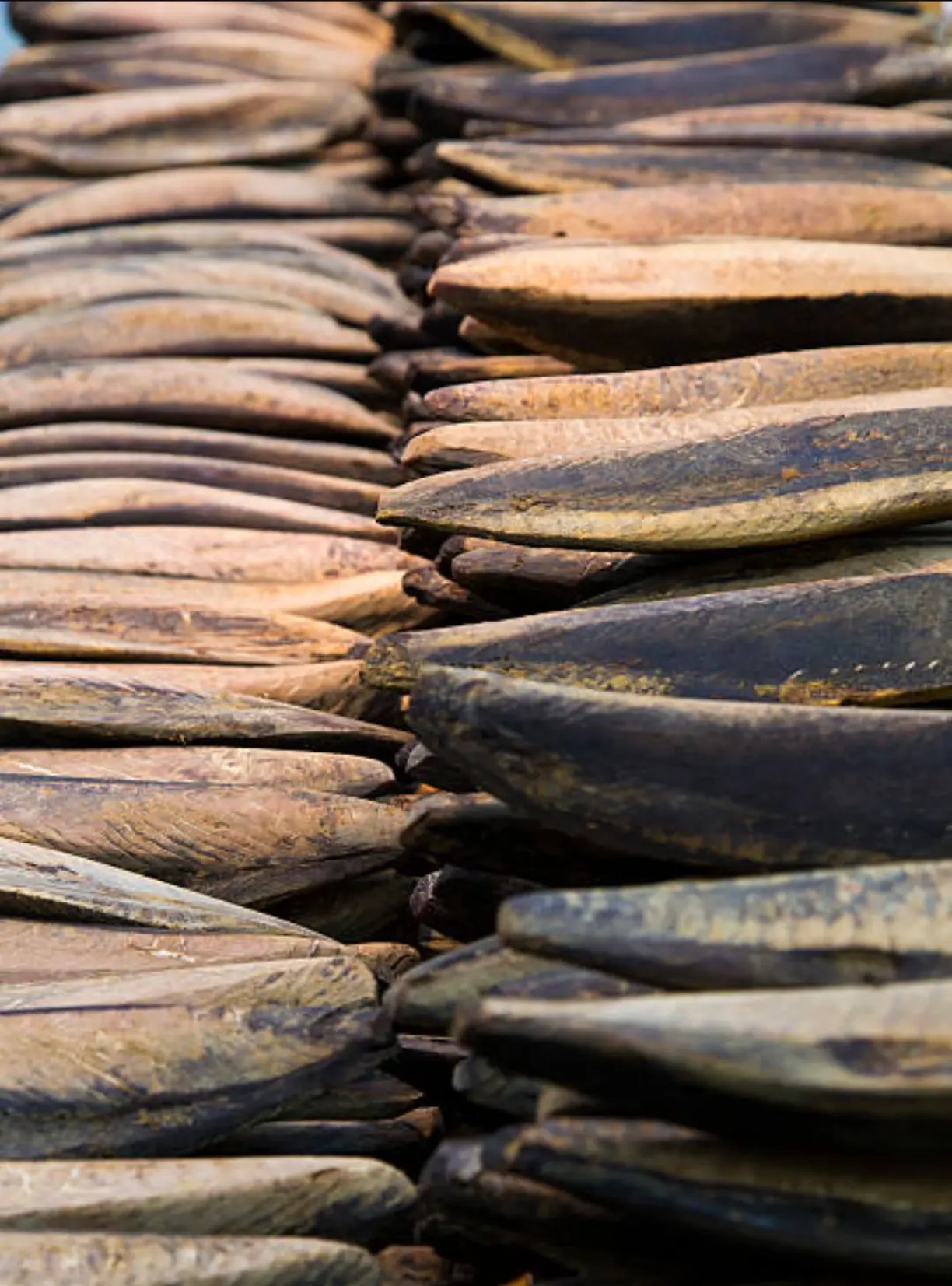
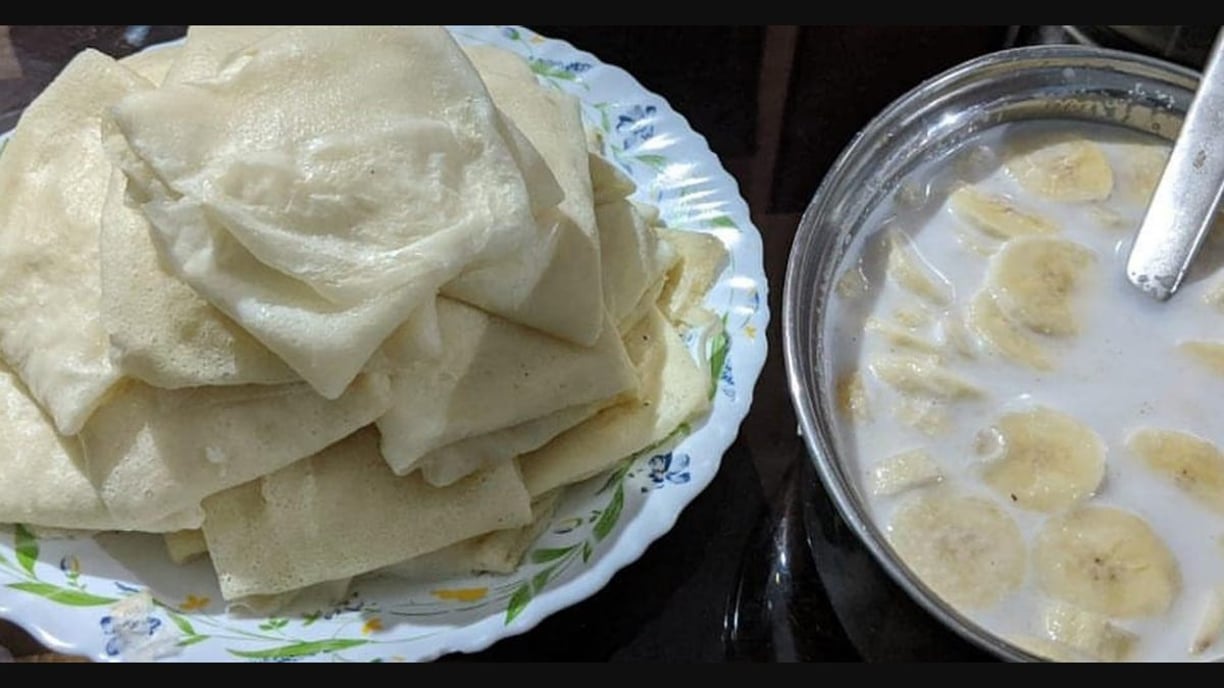
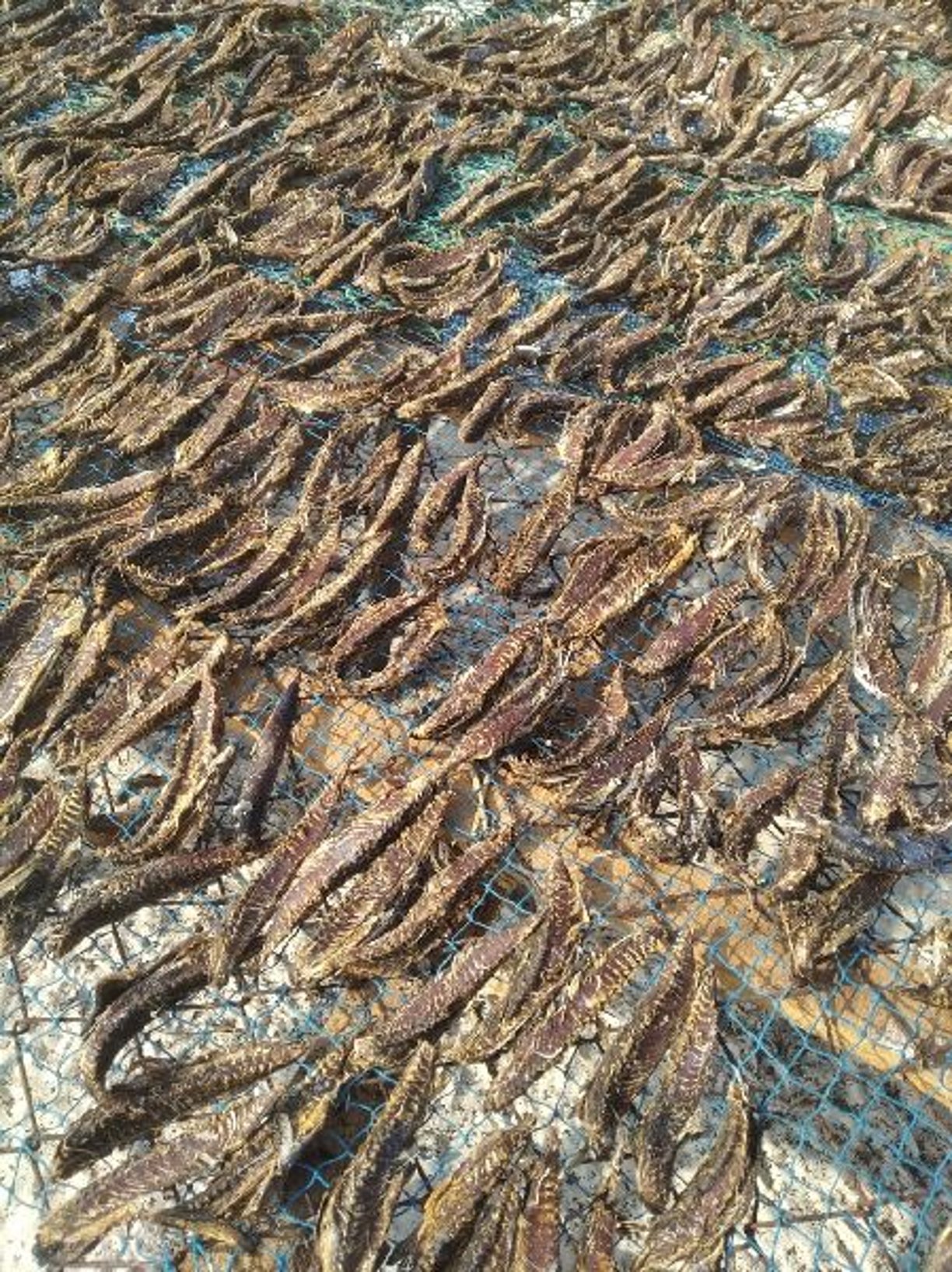




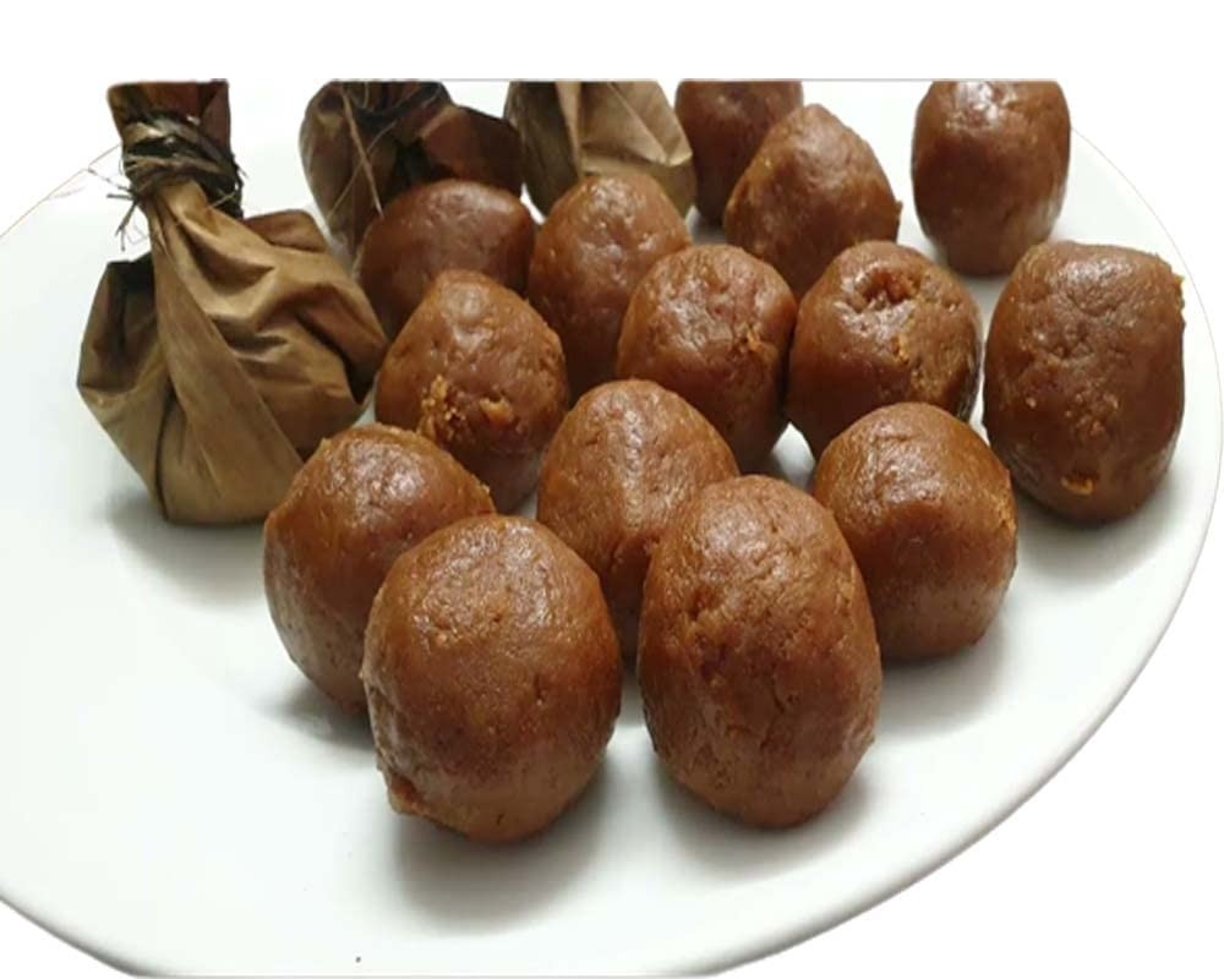




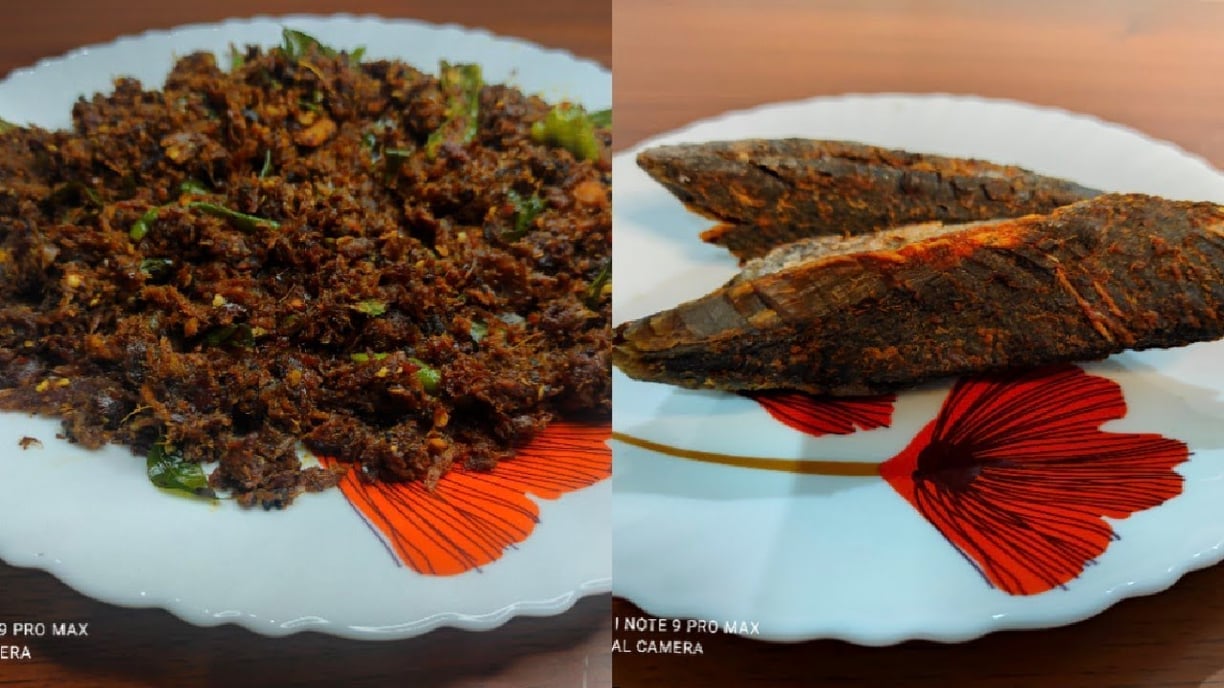
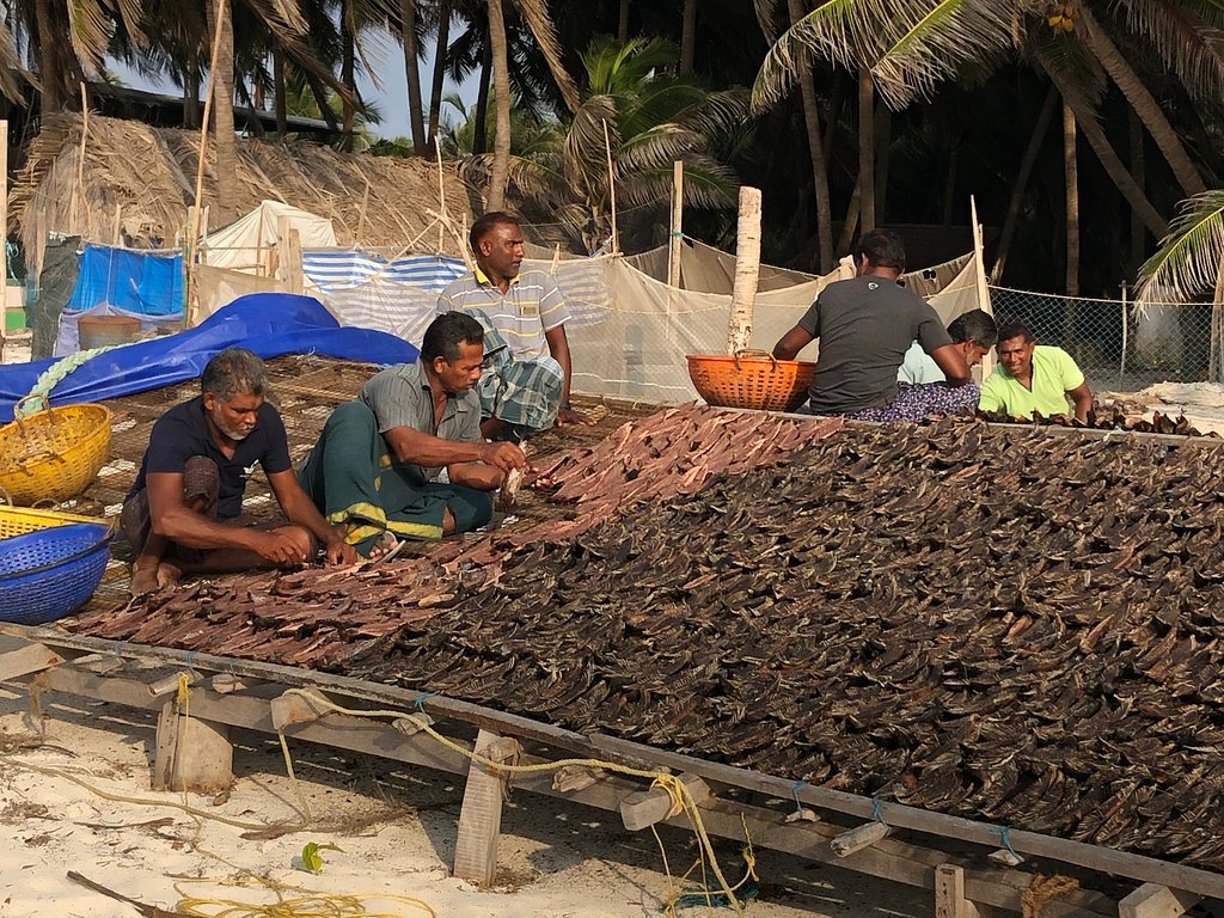


























































Digital Library
A comprehensive resource on Lakshadweep's history and culture.


Cultural Insights
Explore Lakshadweep's unique cultural traditions and heritage.


Marine Life
Discover the diverse marine ecosystem of Lakshadweep islands.




Tourism Guide
Essential information for travelers visiting Lakshadweep's islands.
Research Hub
Access scholarly articles and research papers on Lakshadweep.
→
→
→
→
Digital Library Services
Explore Lakshadweep's rich history, culture, and ecology through our extensive digital resources.
Comprehensive Research Materials
Access a wide range of books, articles, and research papers on Lakshadweep's unique ecosystem.


Multimedia Educational Content
Engage with interactive maps, videos, and multimedia resources to enhance your understanding of Lakshadweep.


Contact Us for Inquiries
Reach out for questions about our digital library on Lakshadweep's history, culture, and ecology. We're here to assist you!
Connect
9400789823
Support
email@lakzoneventure.com
Explore
Unforgettable travel experiences in Lakshadweep await.
Connect
Discover
email@lakzoneventure.com
+91-9400789823
+91-9447302605
+91-9497774774
© 2025 Lakzone venture. All rights reserved. | Designed with ❤️
